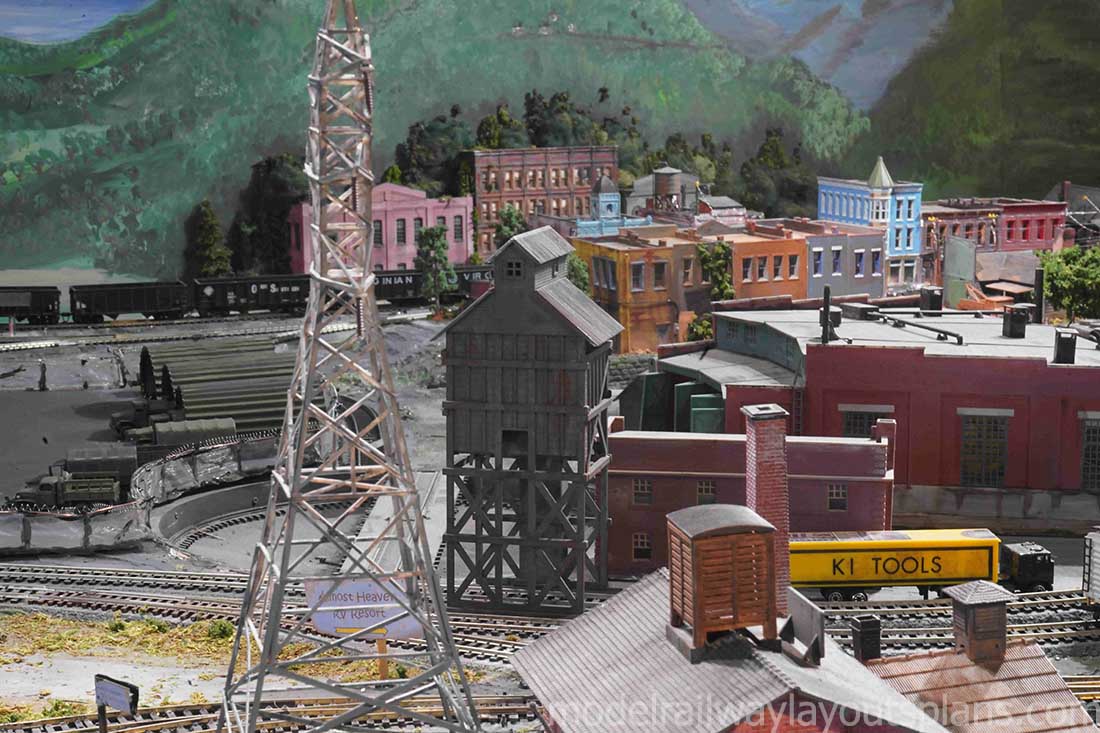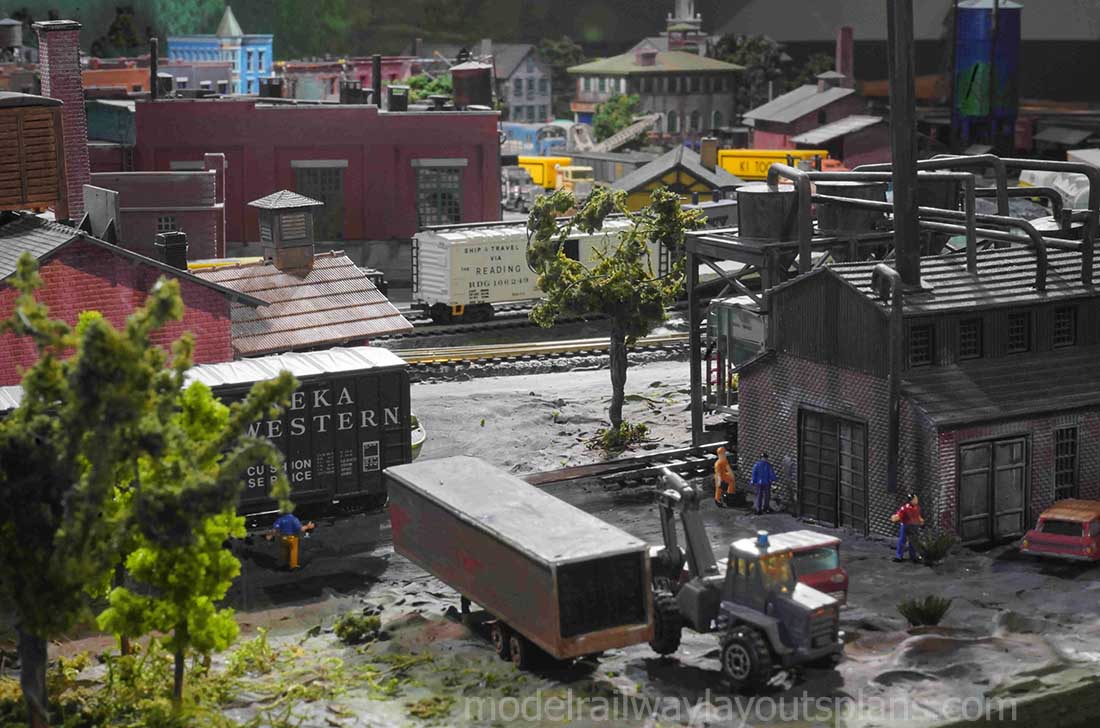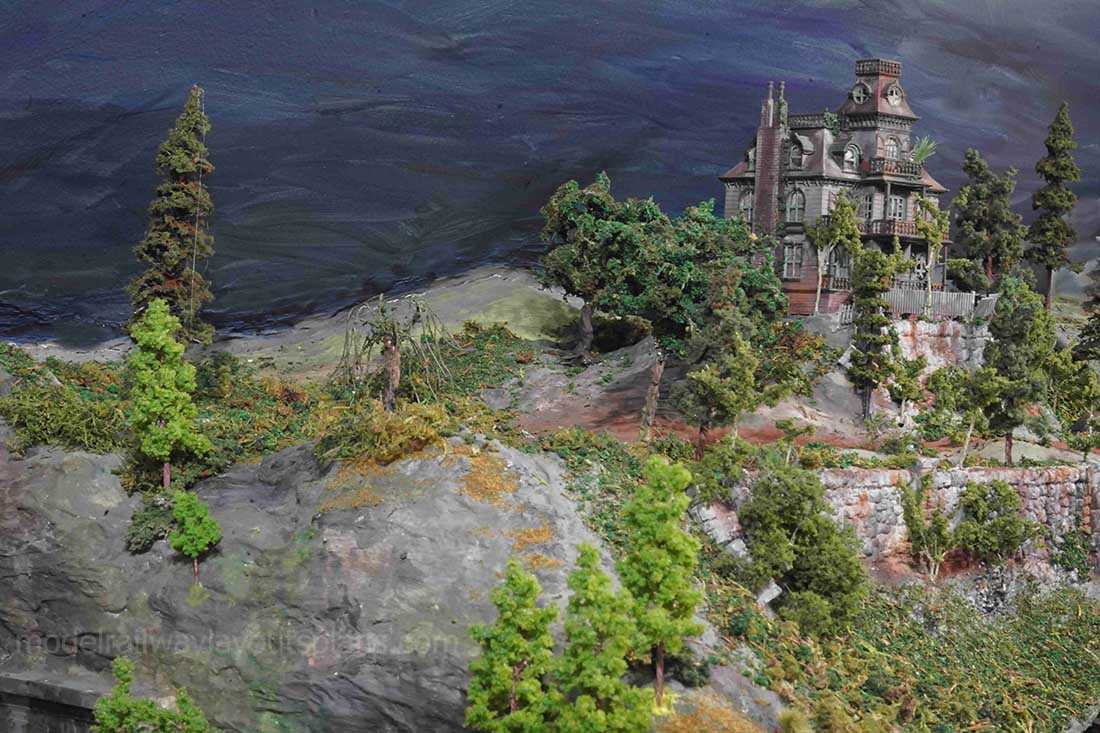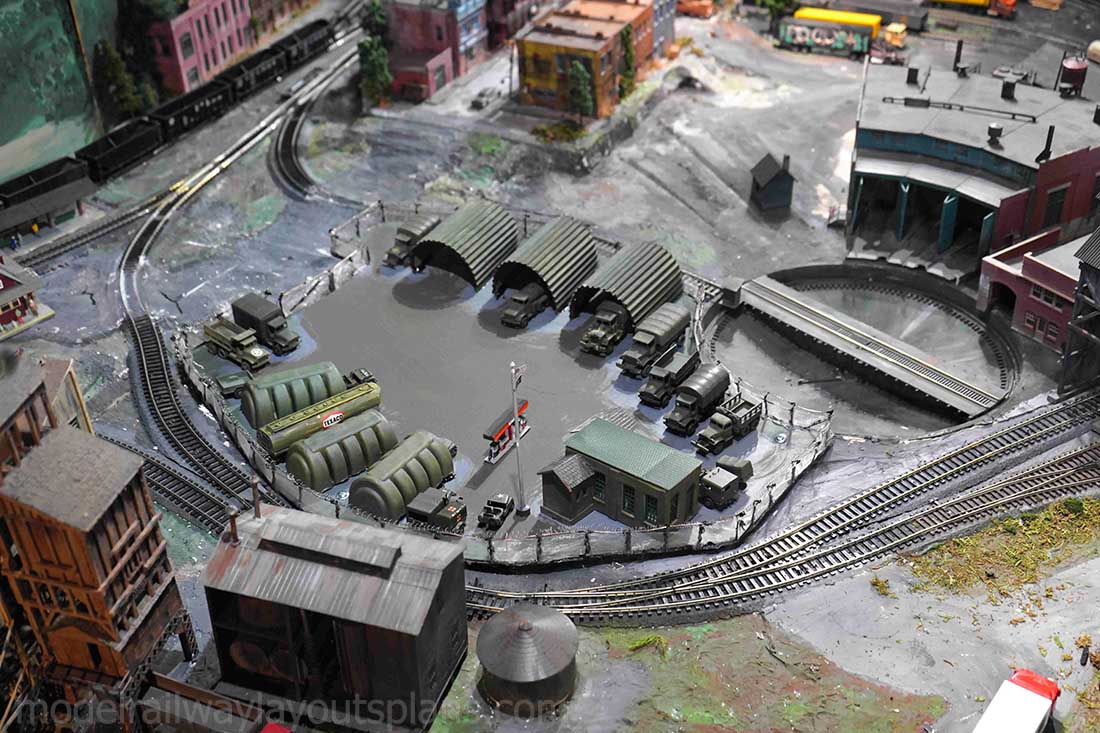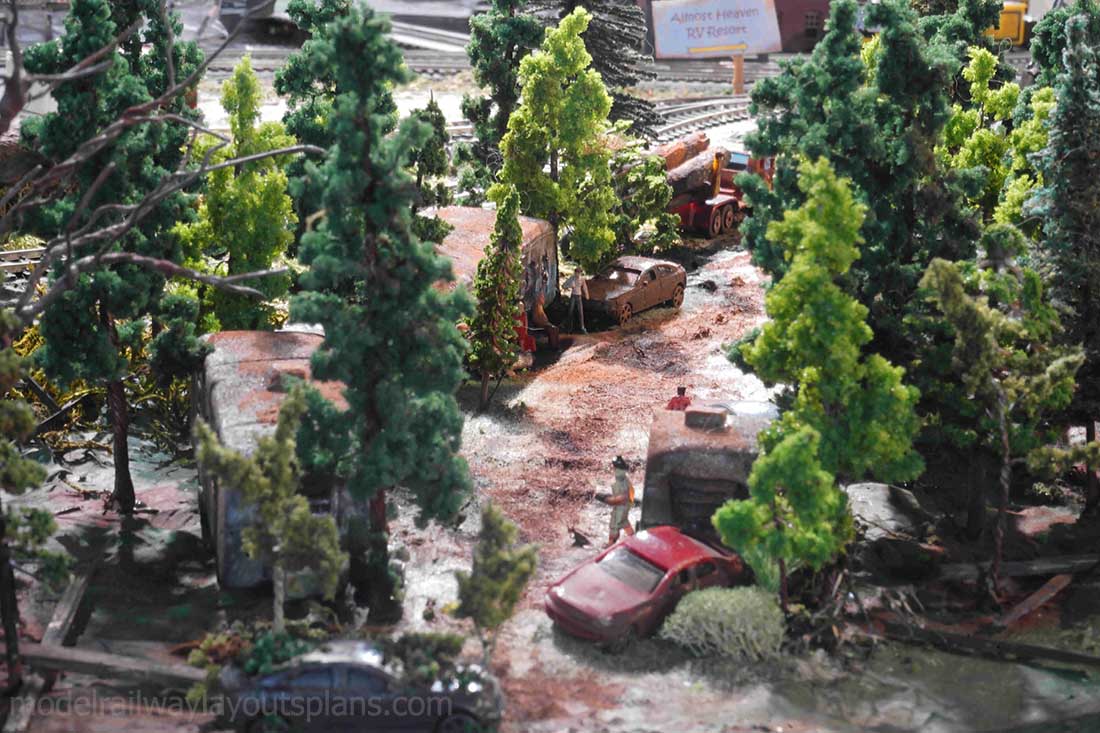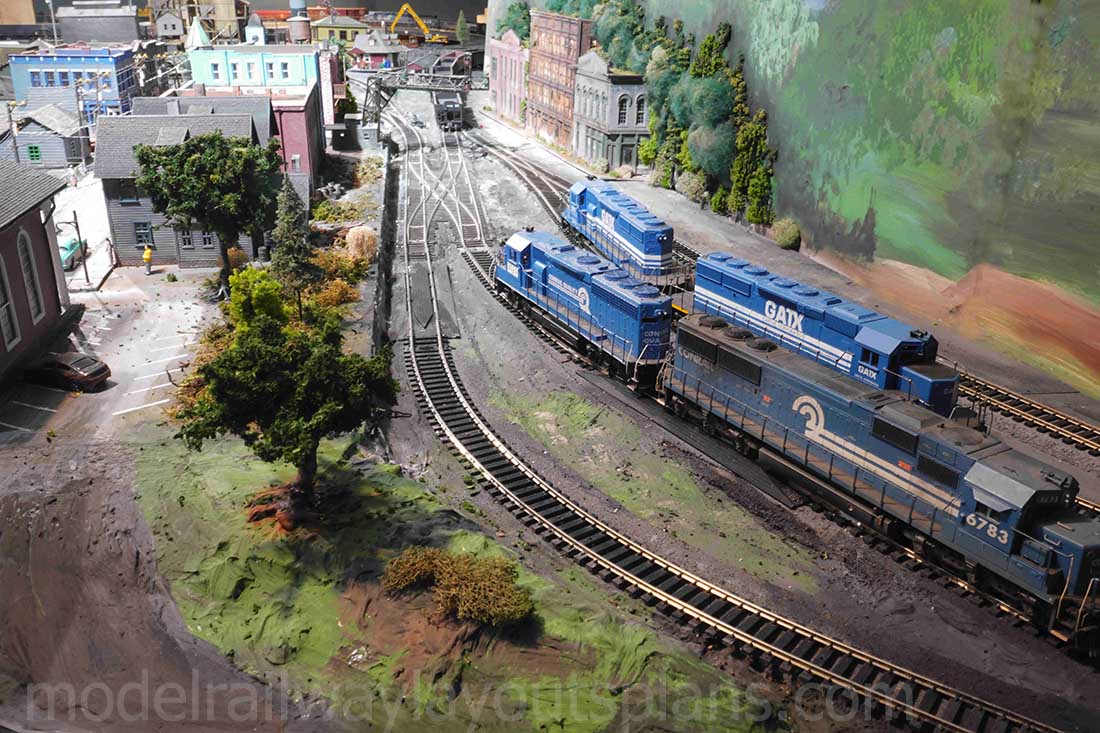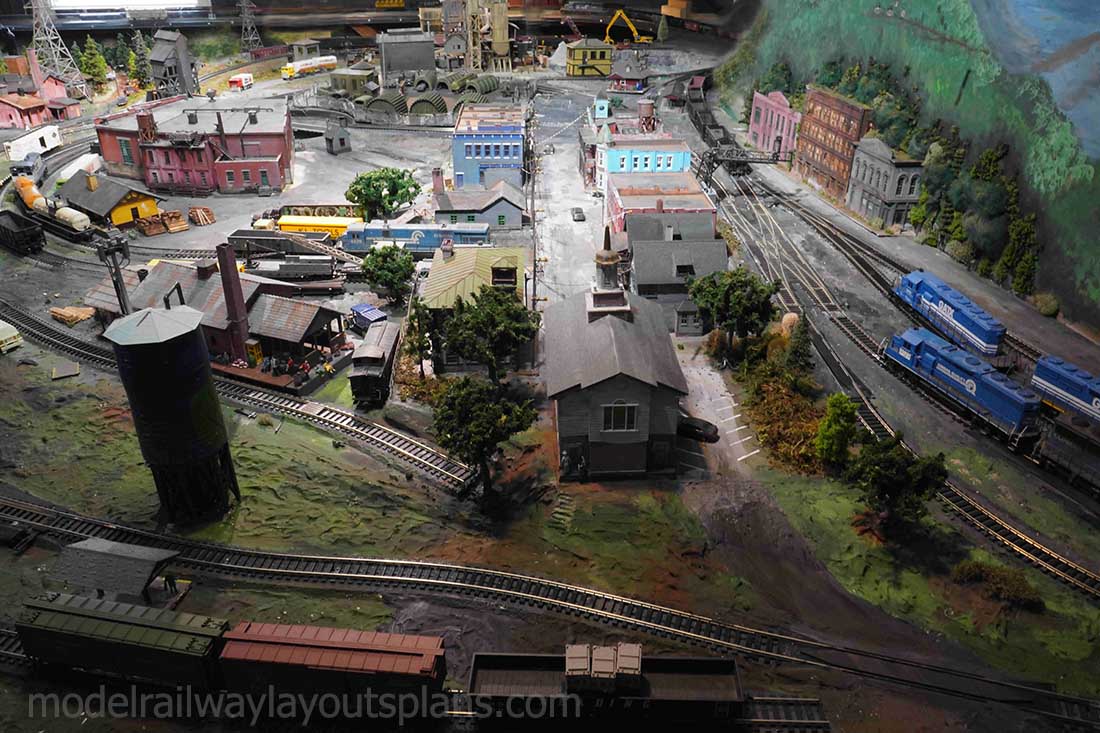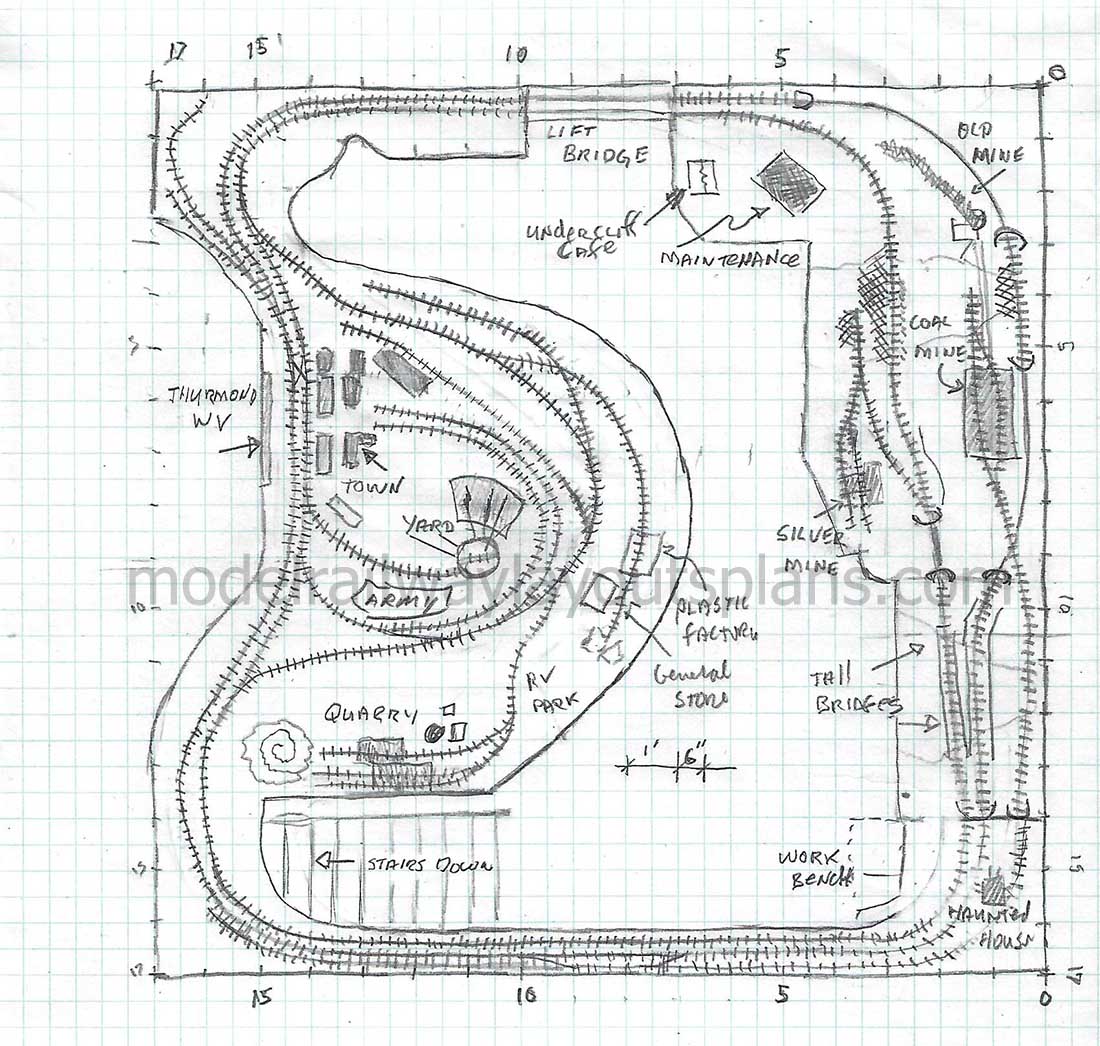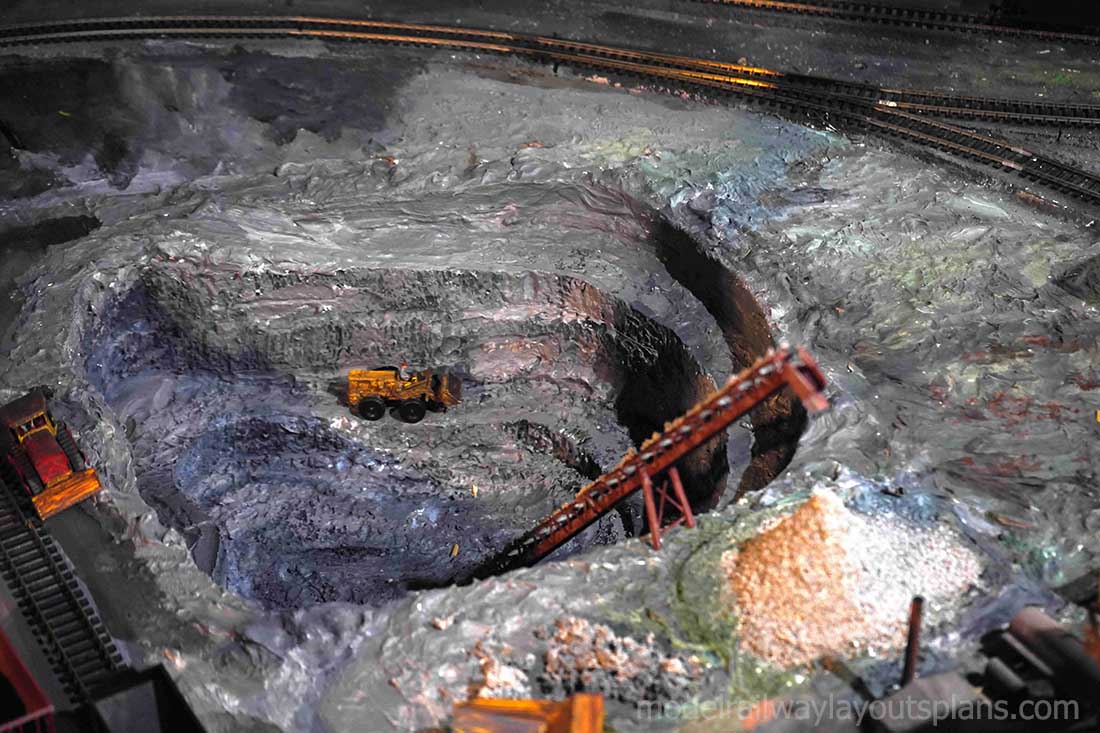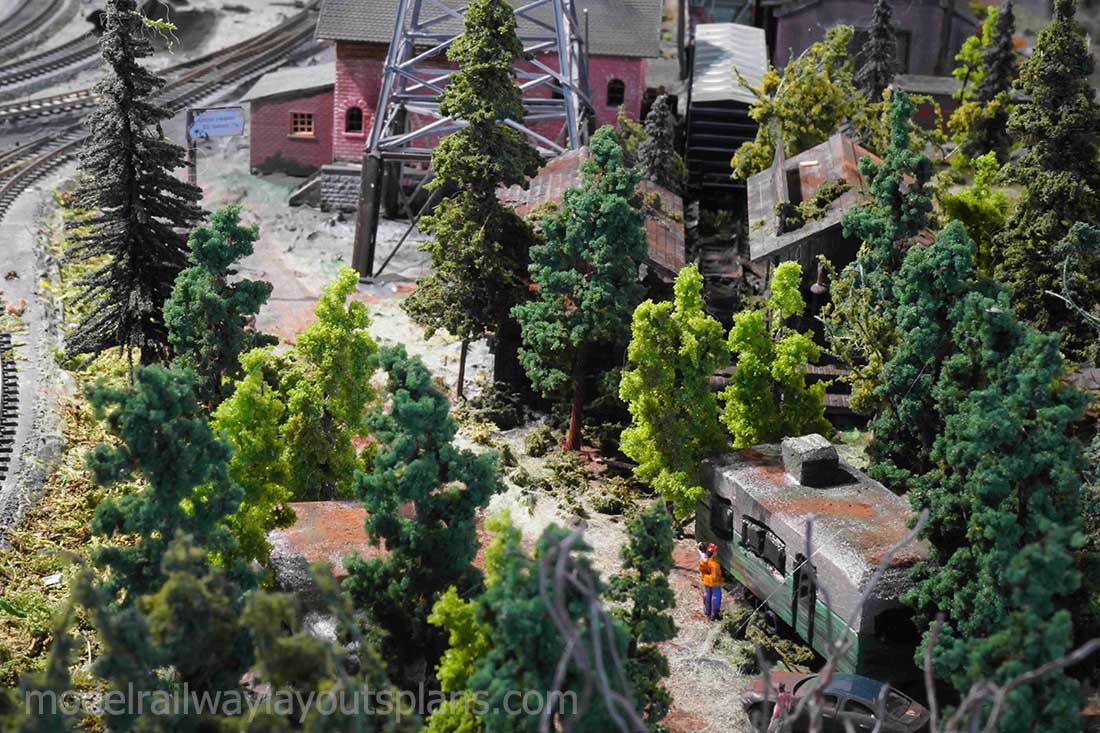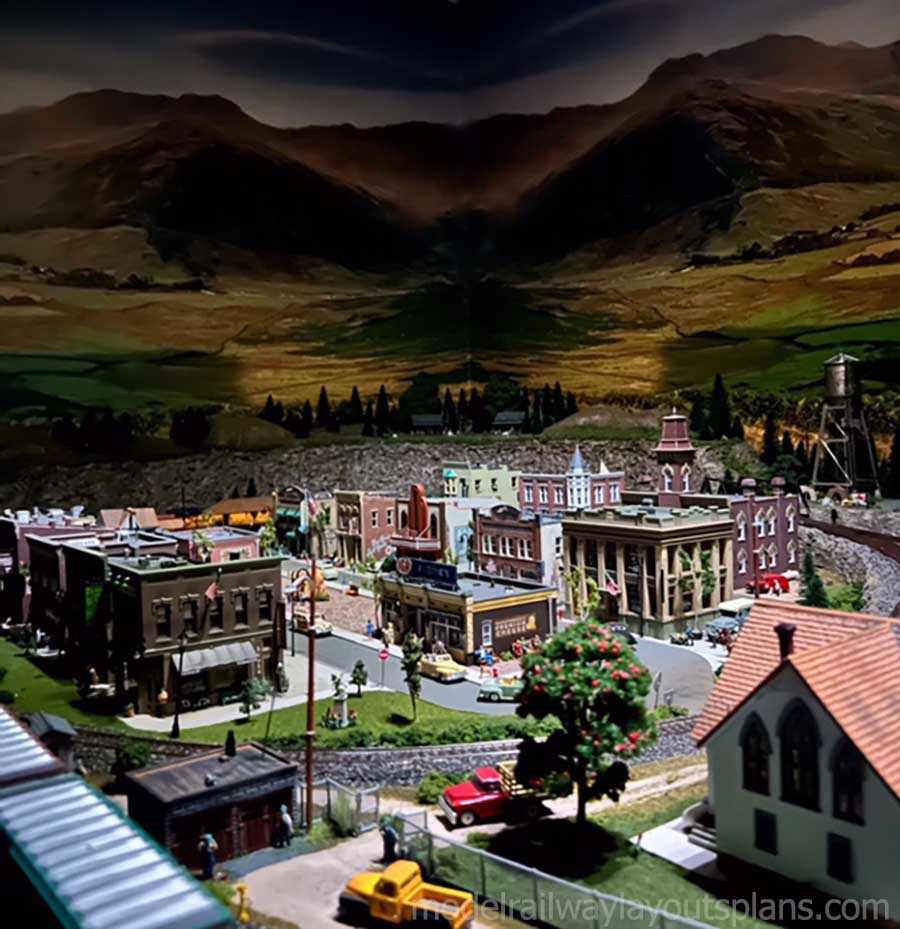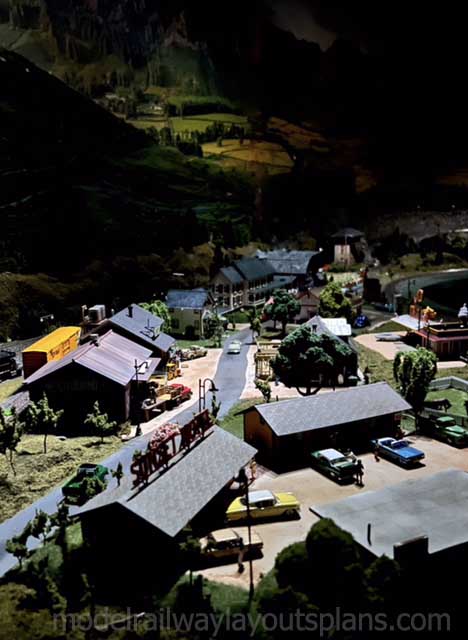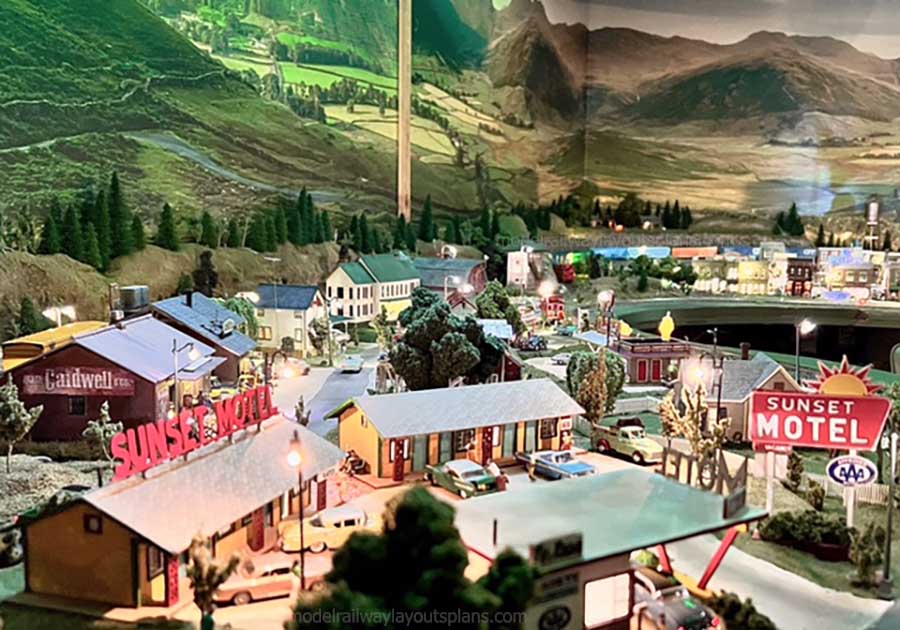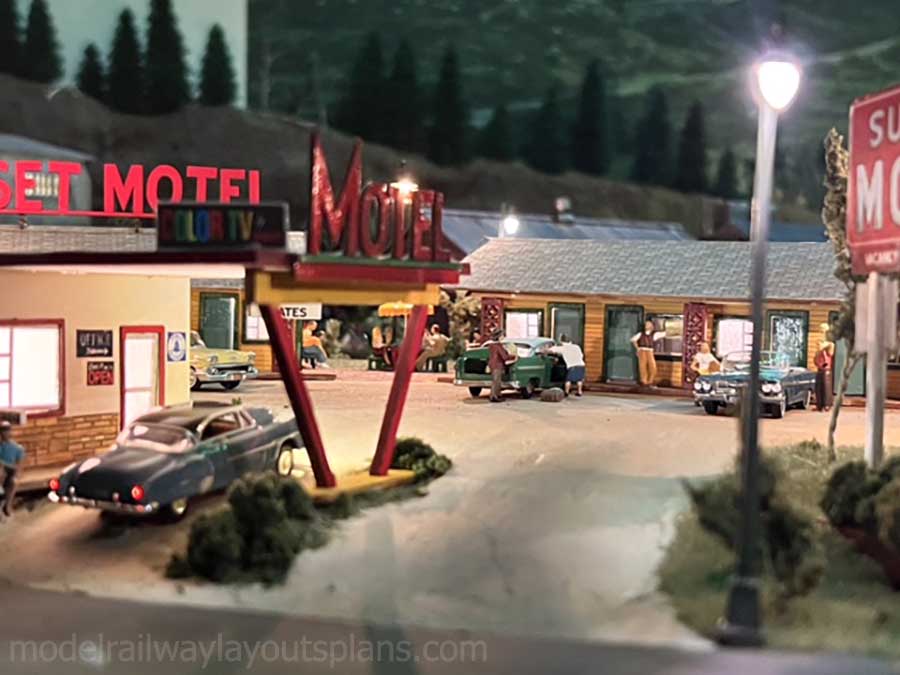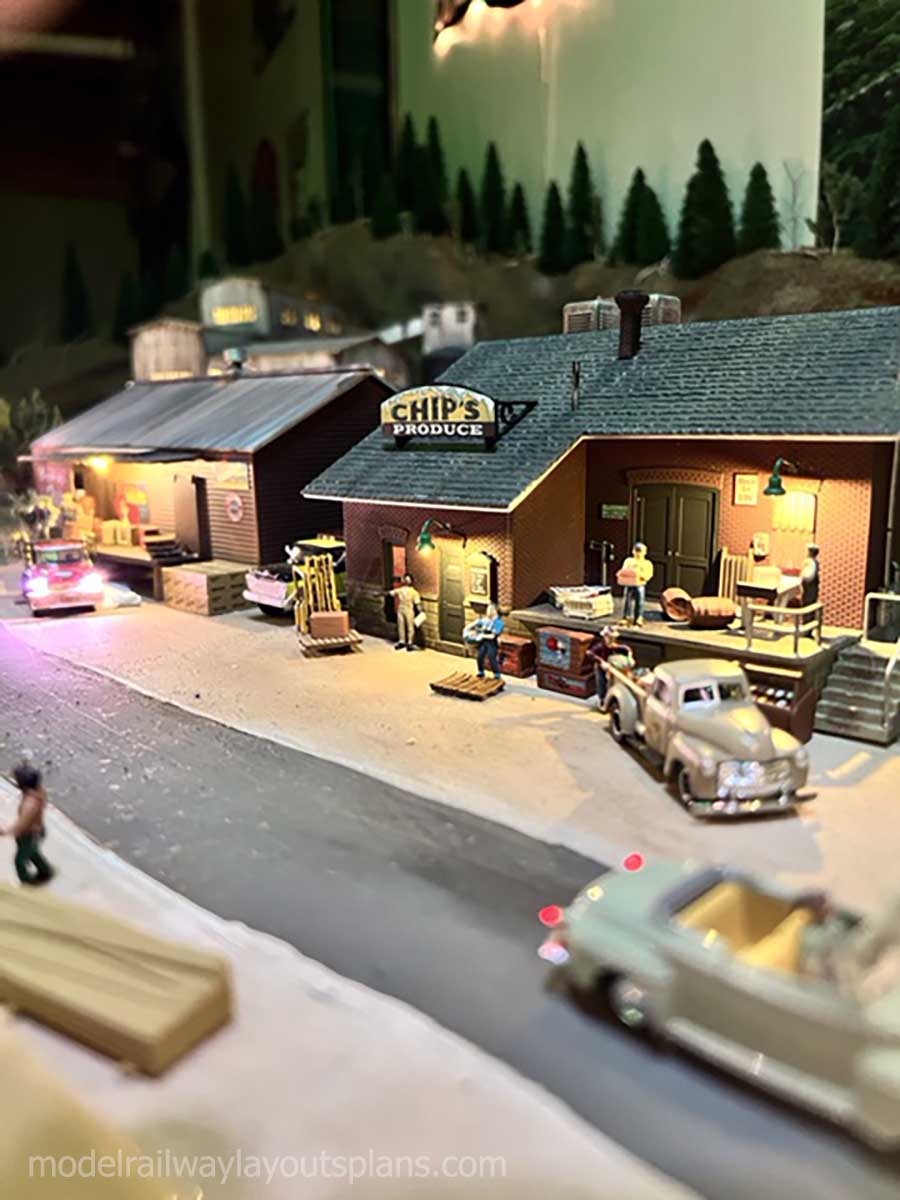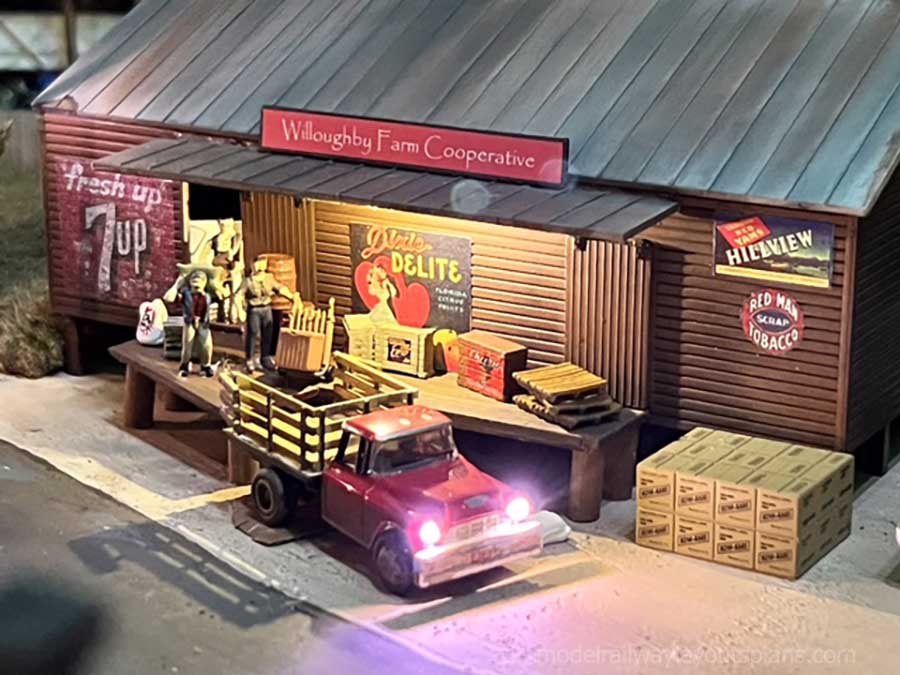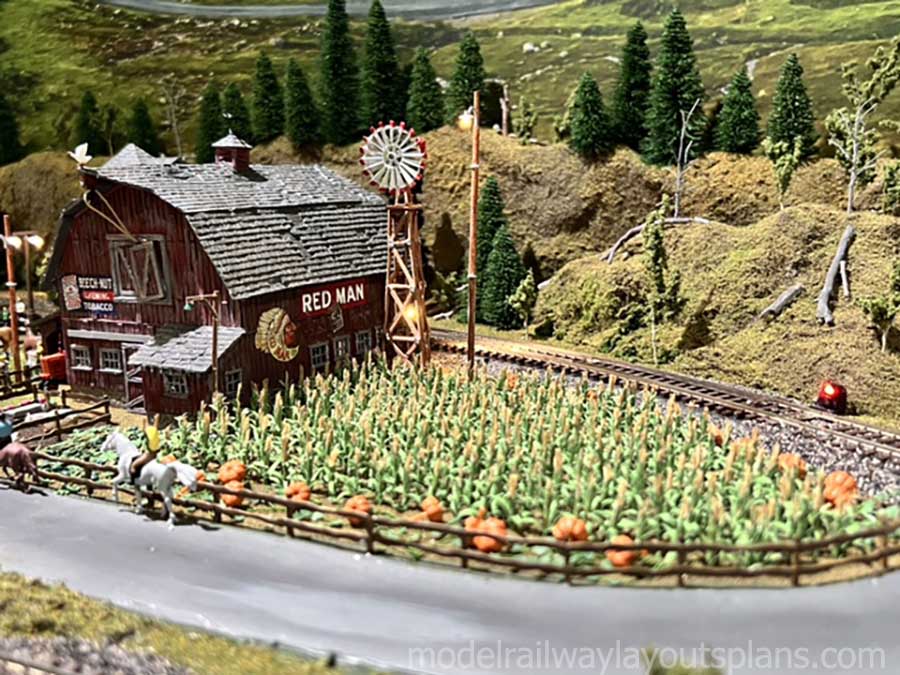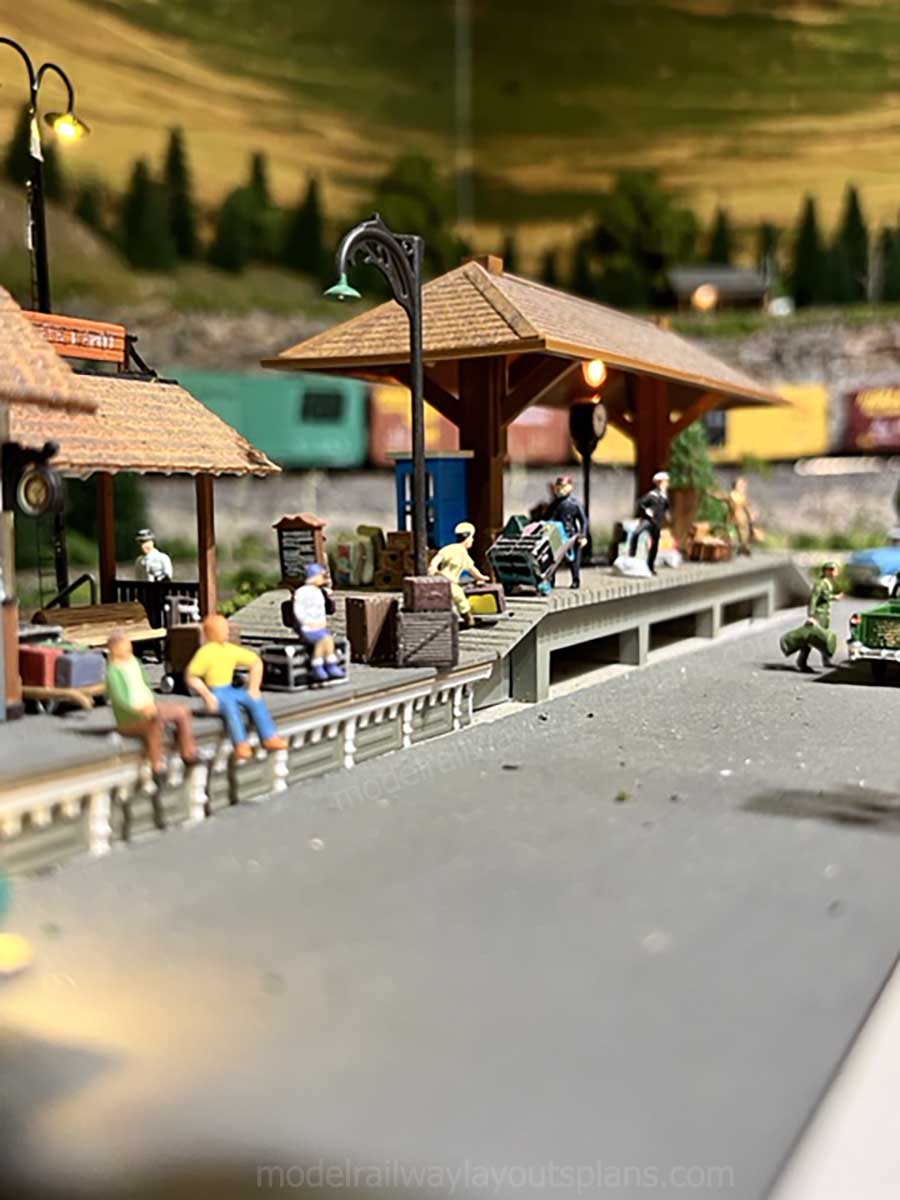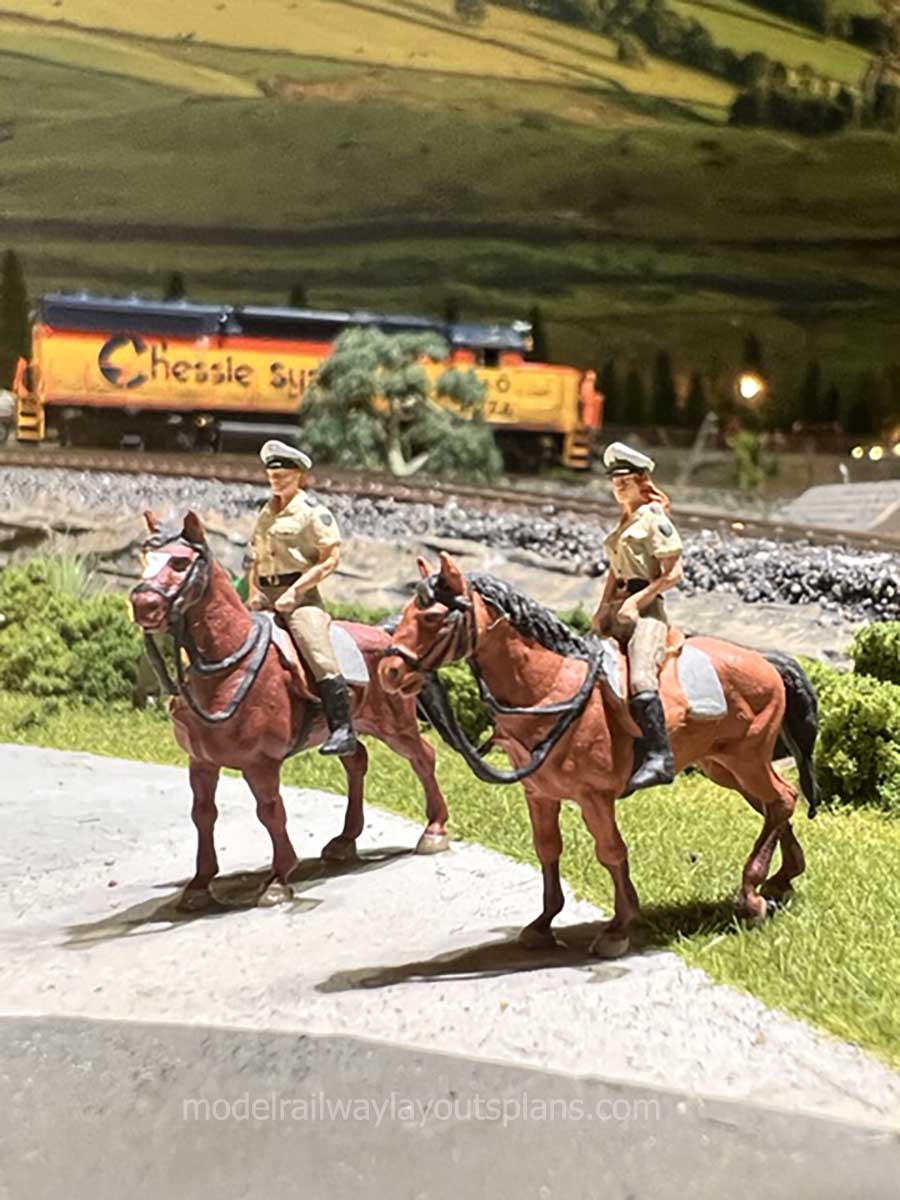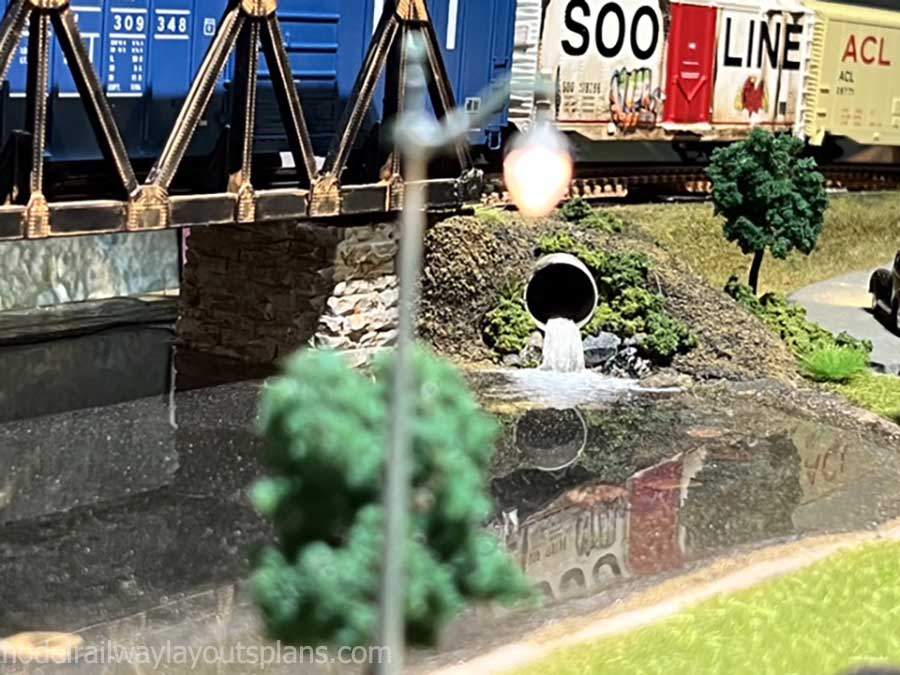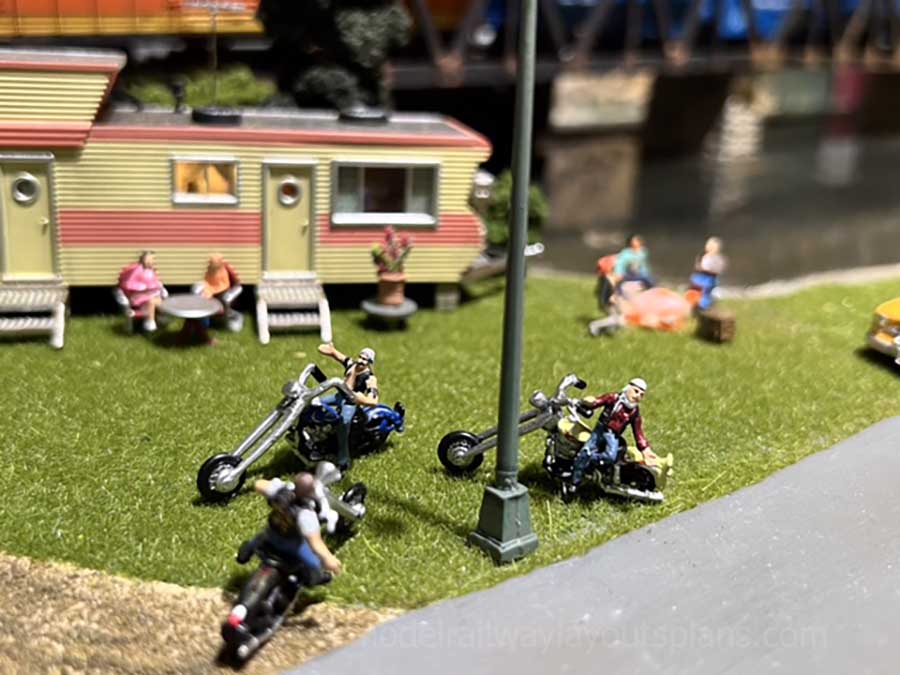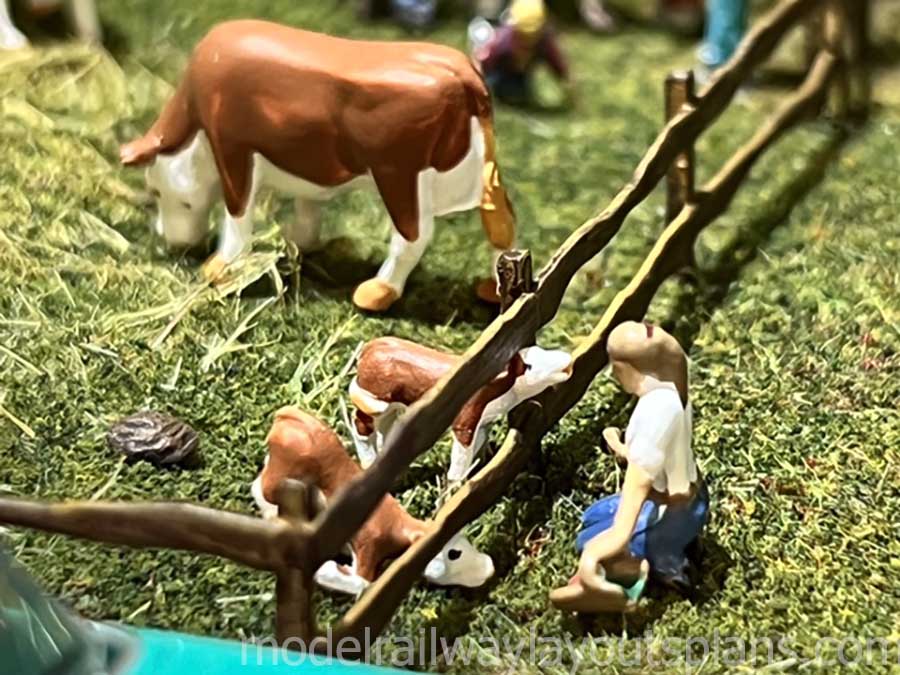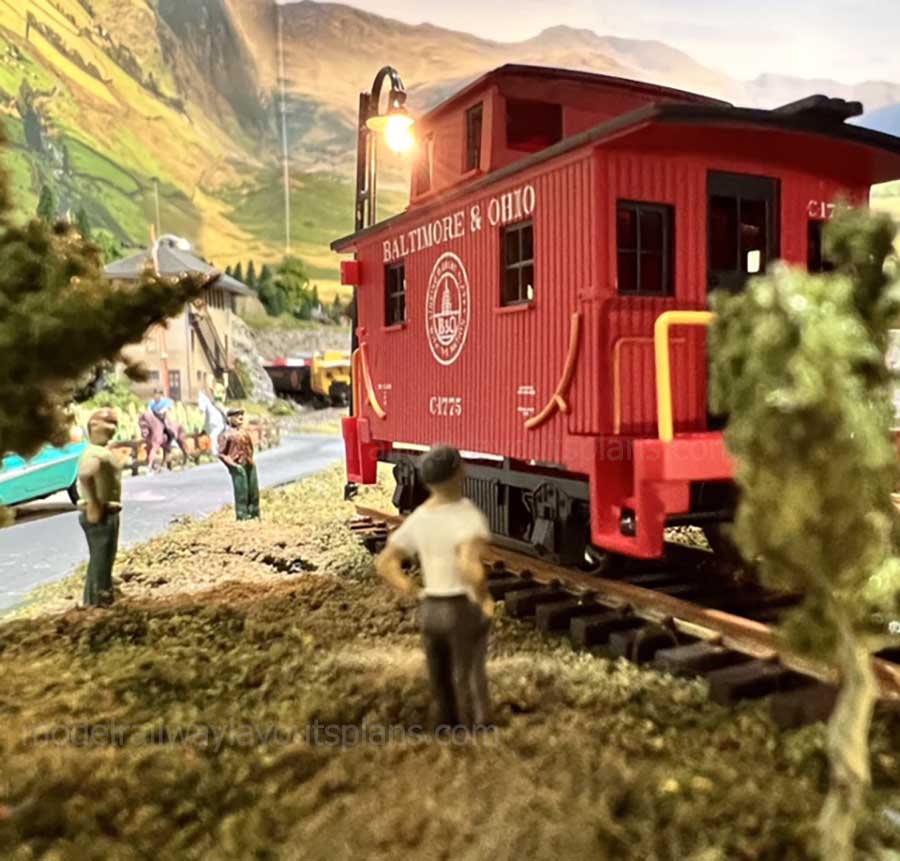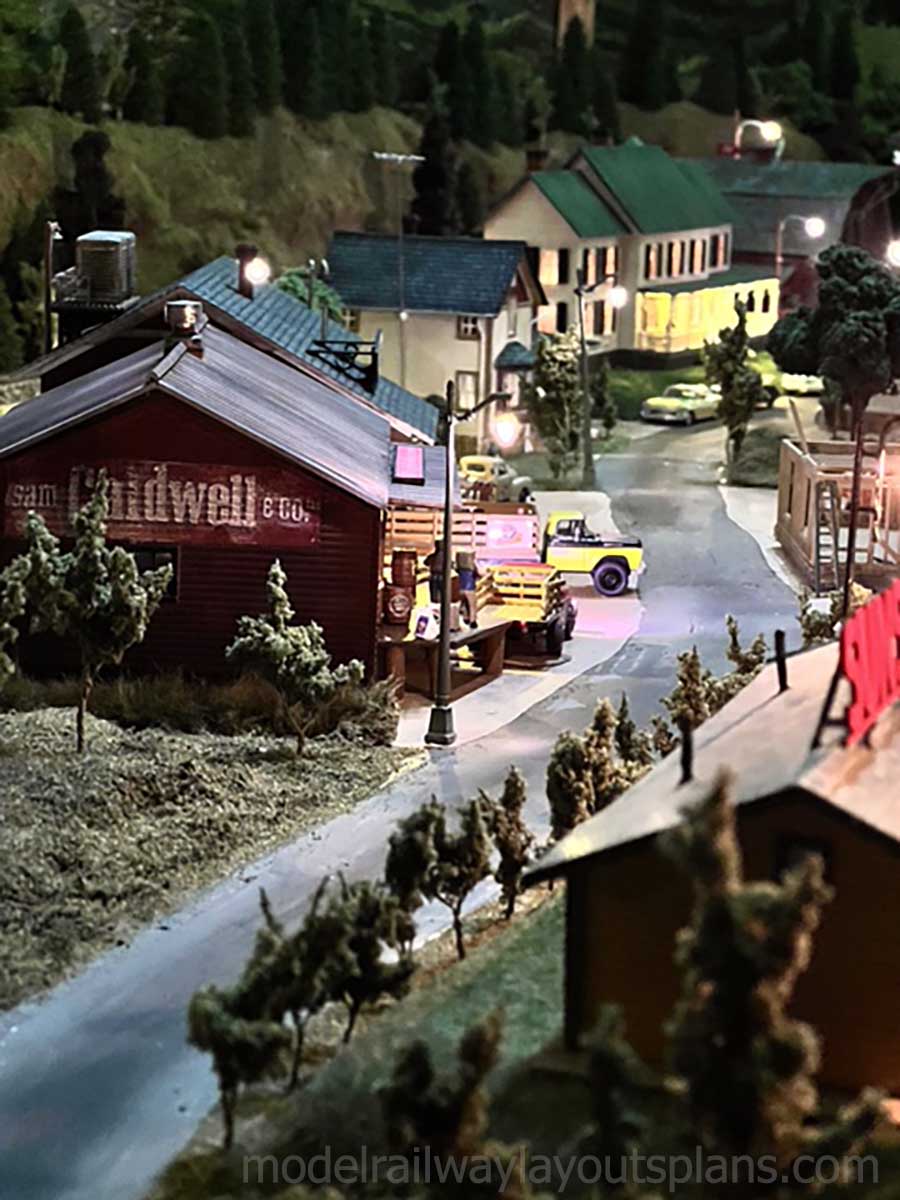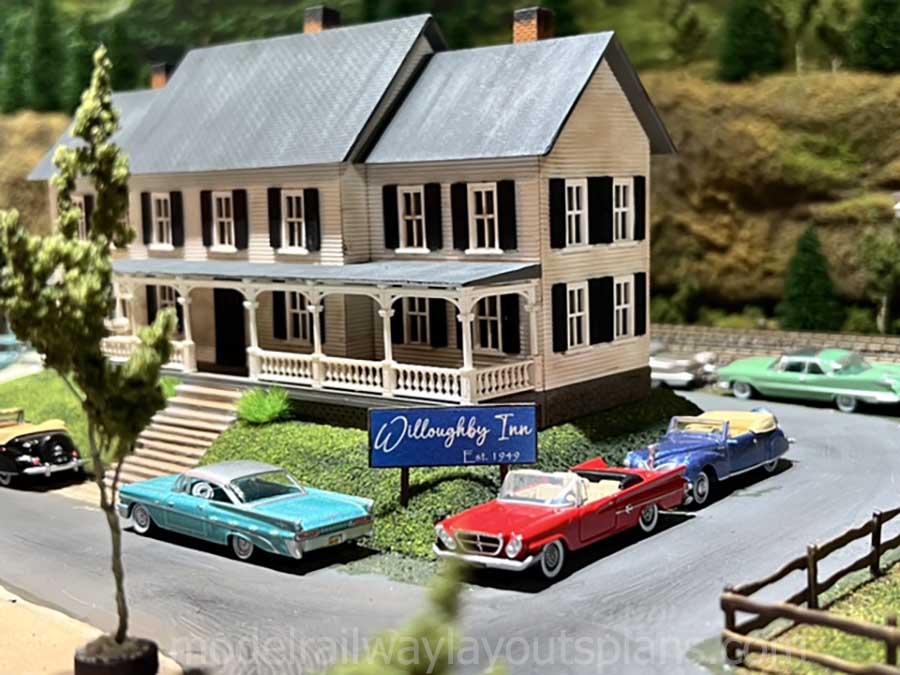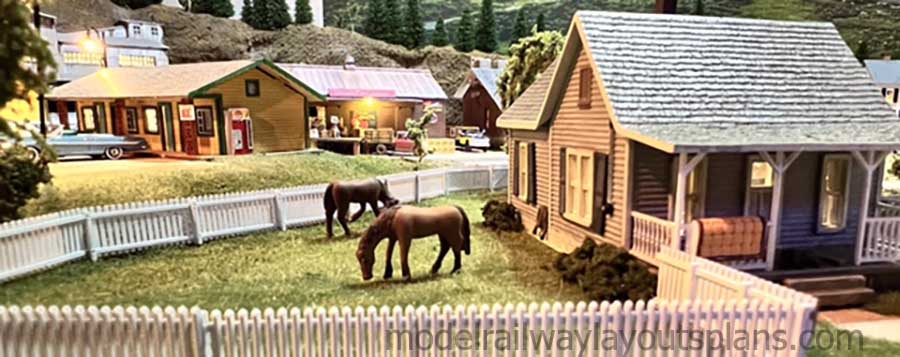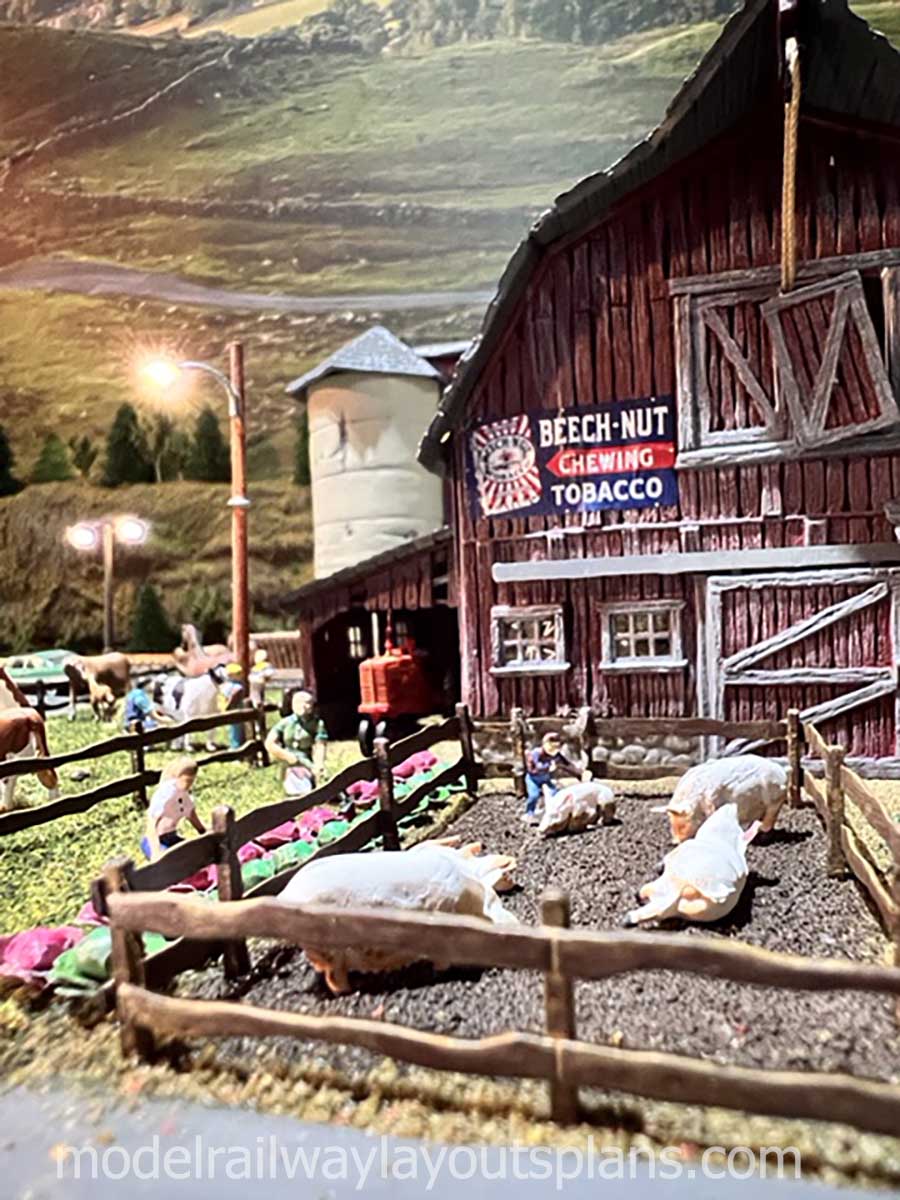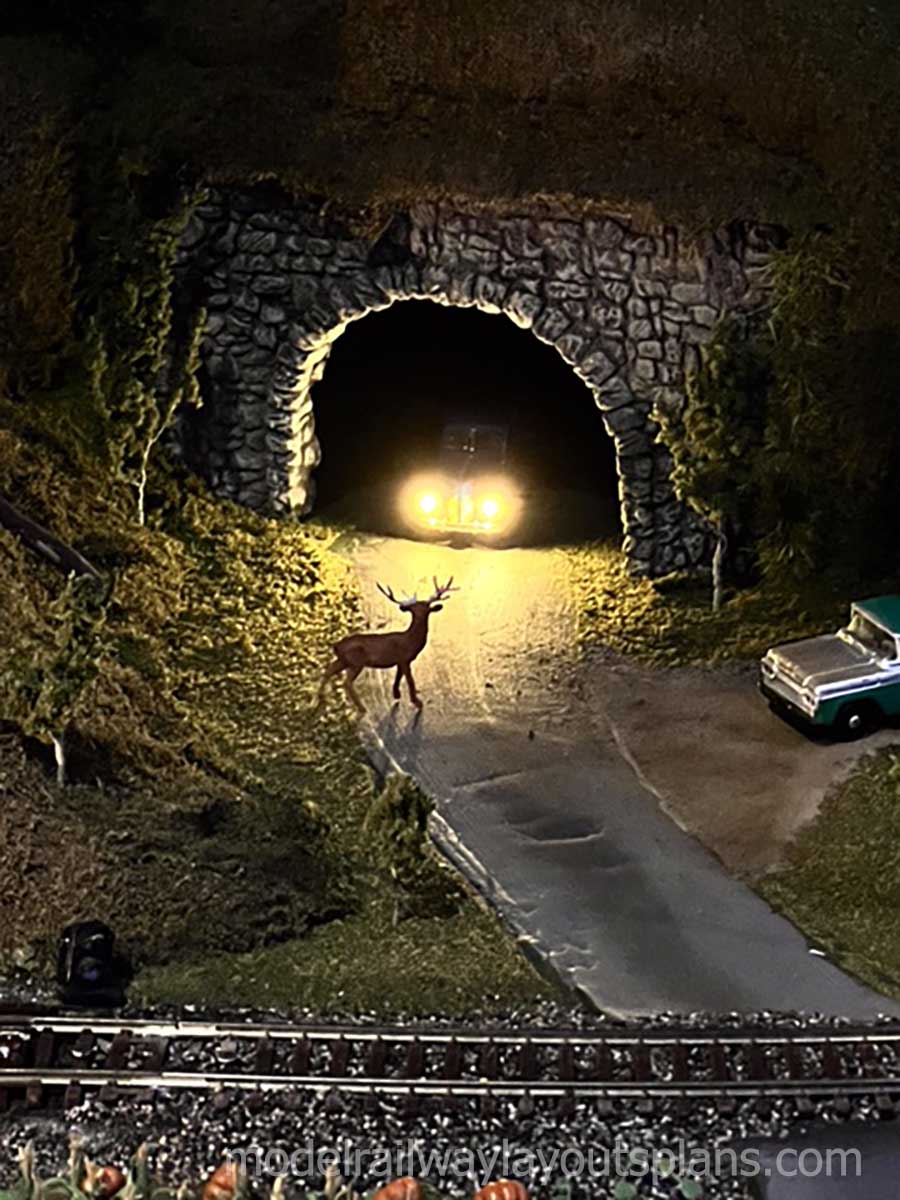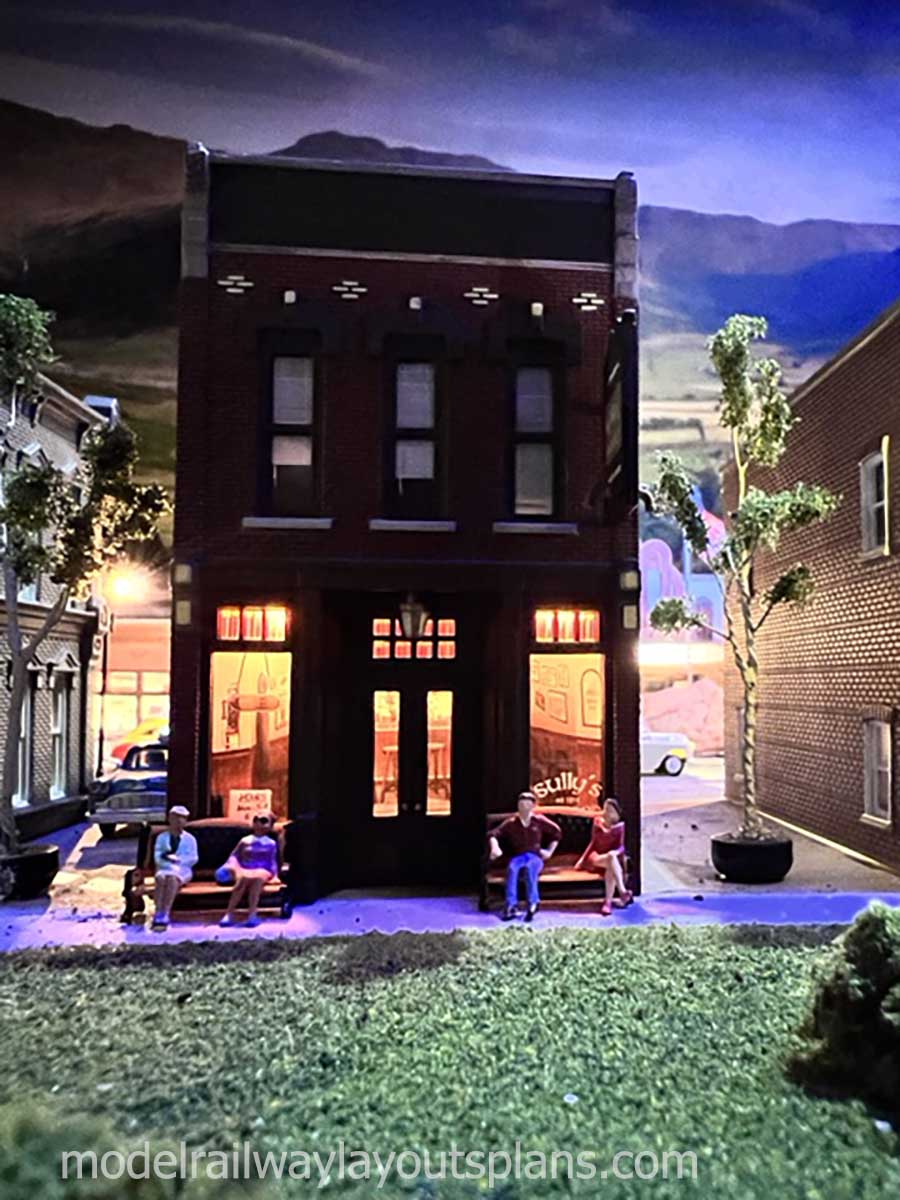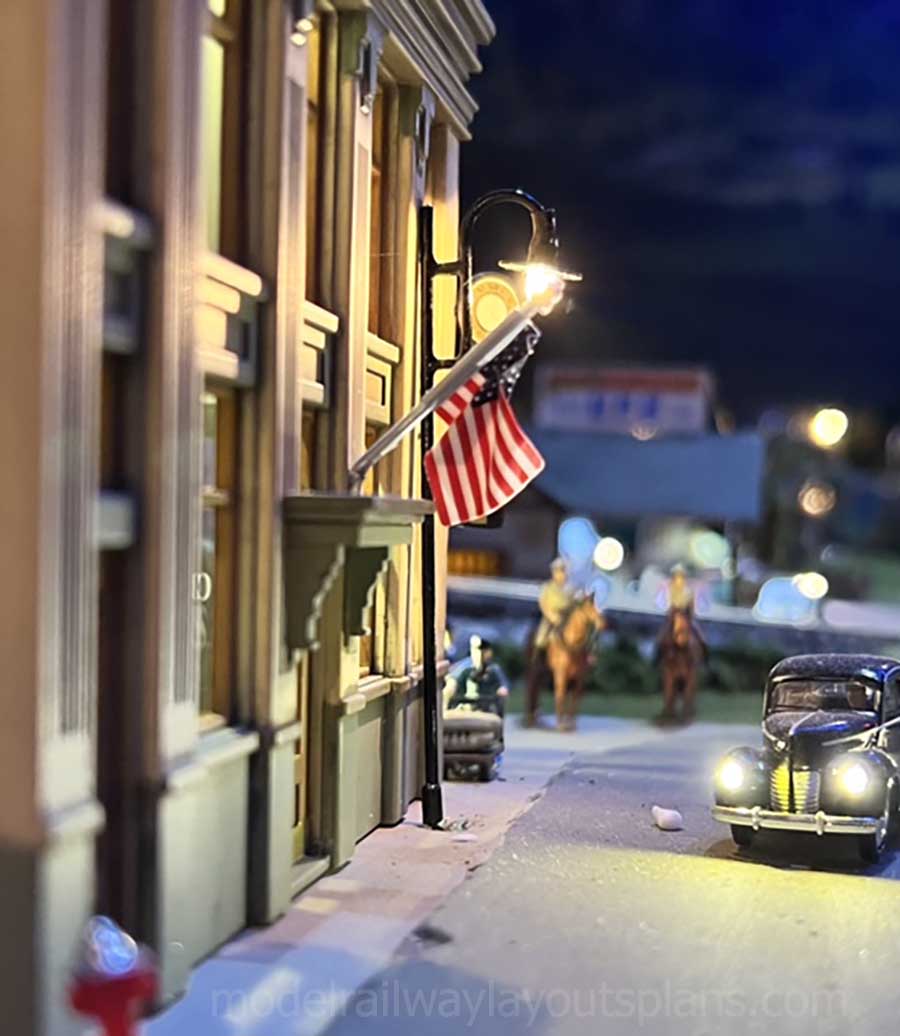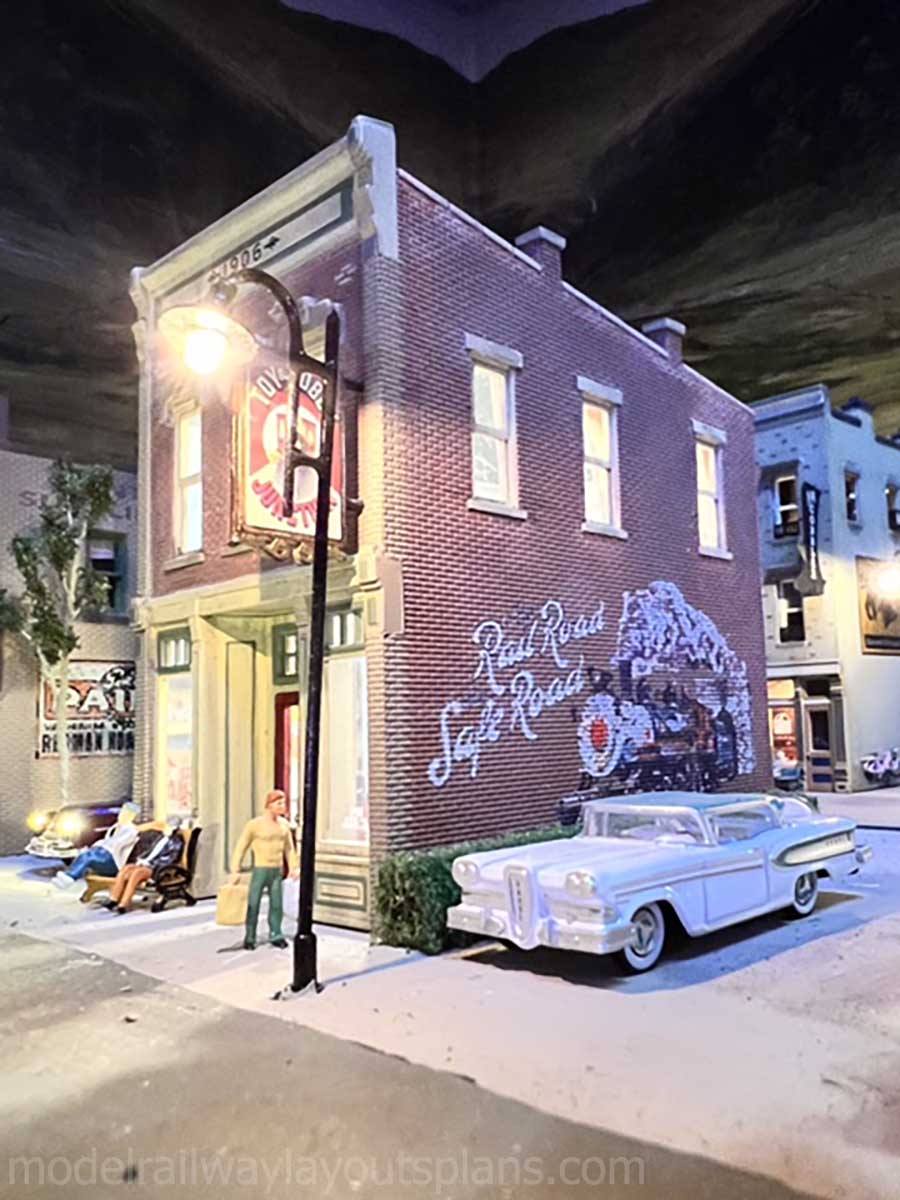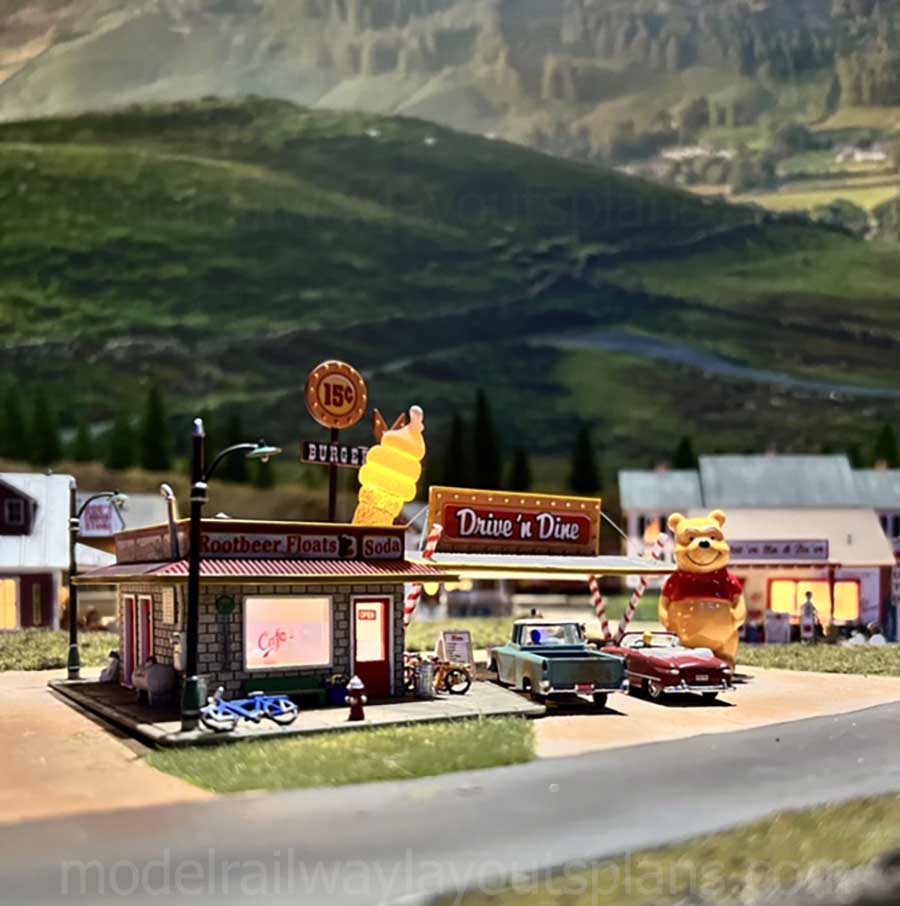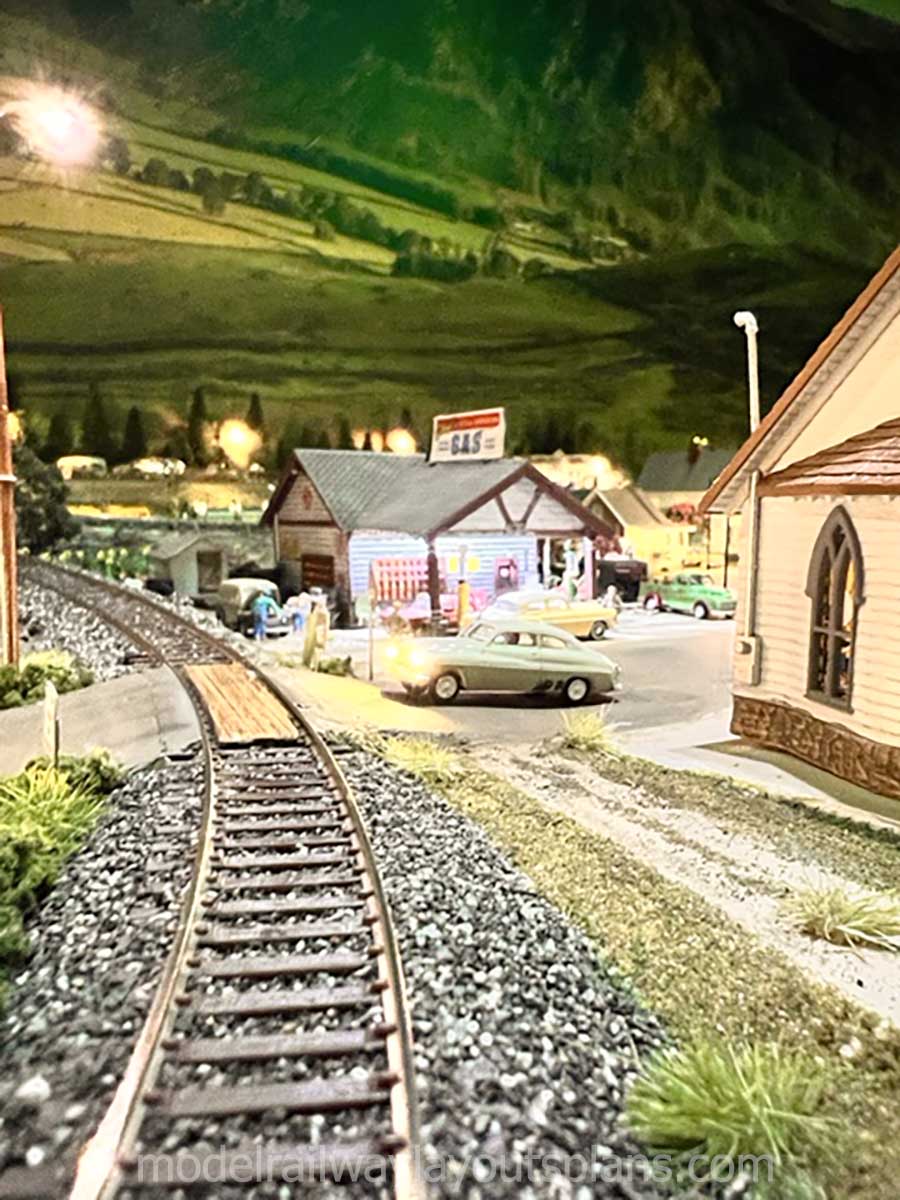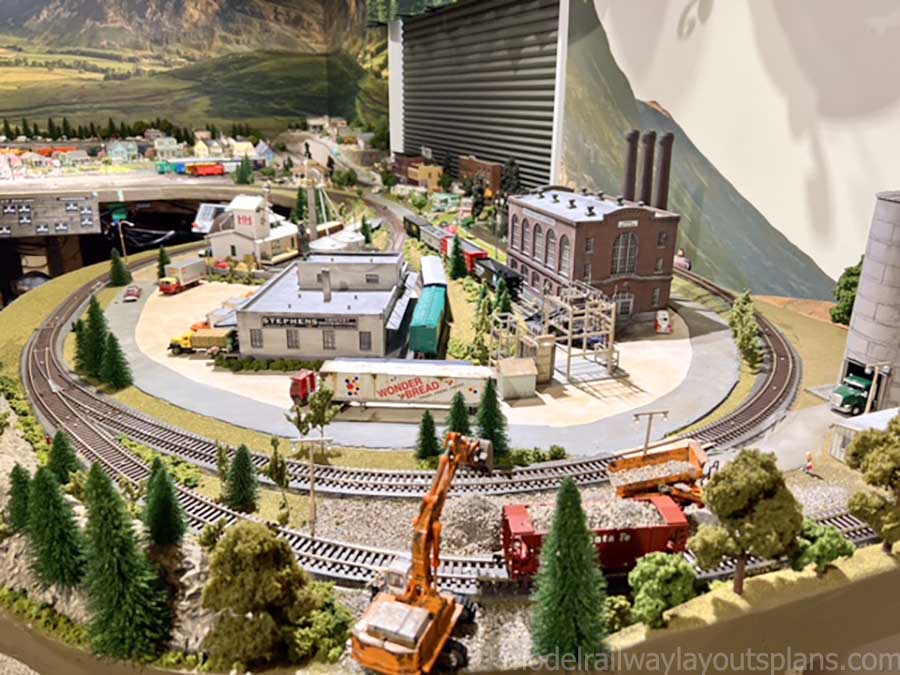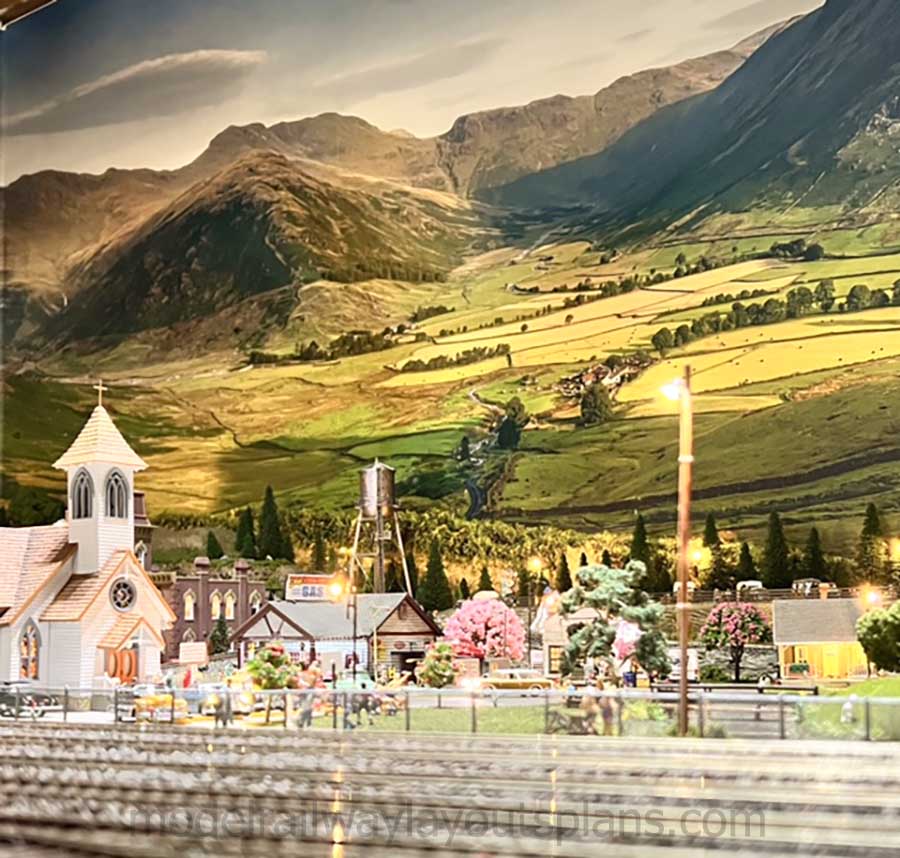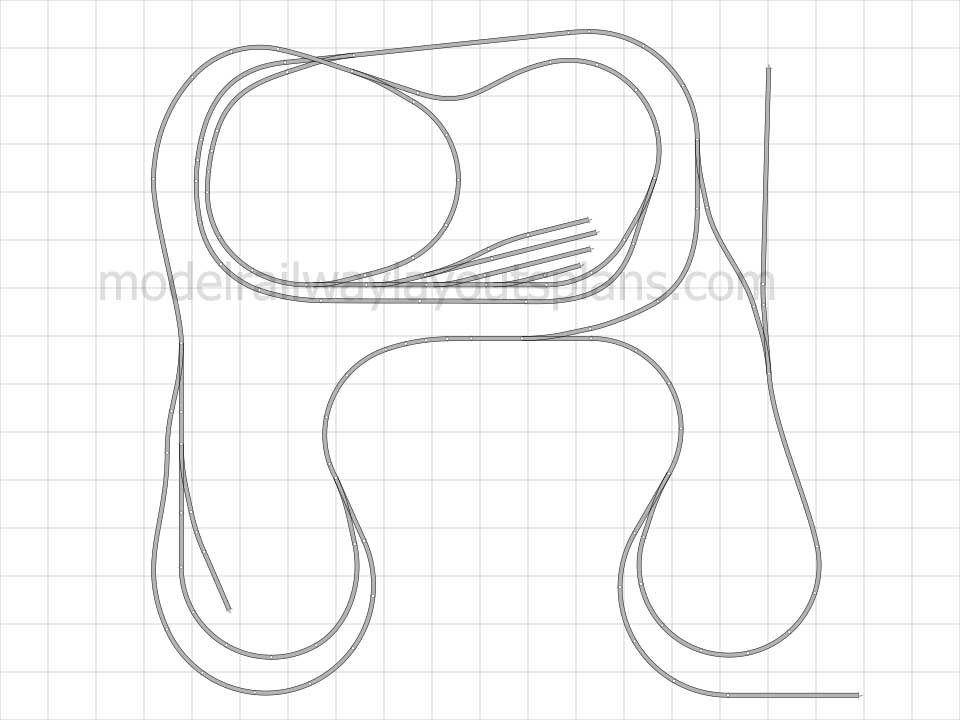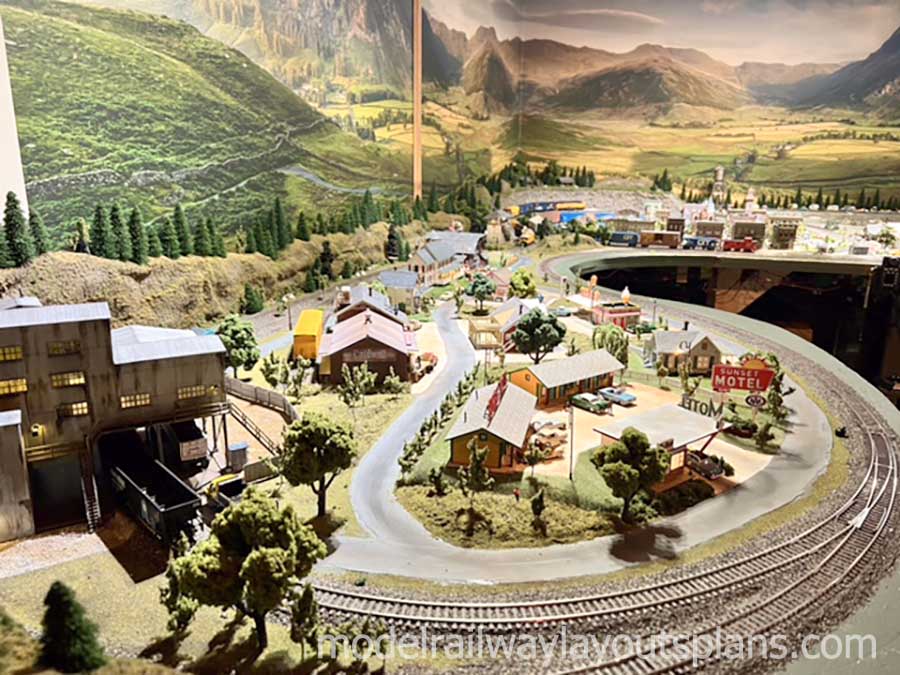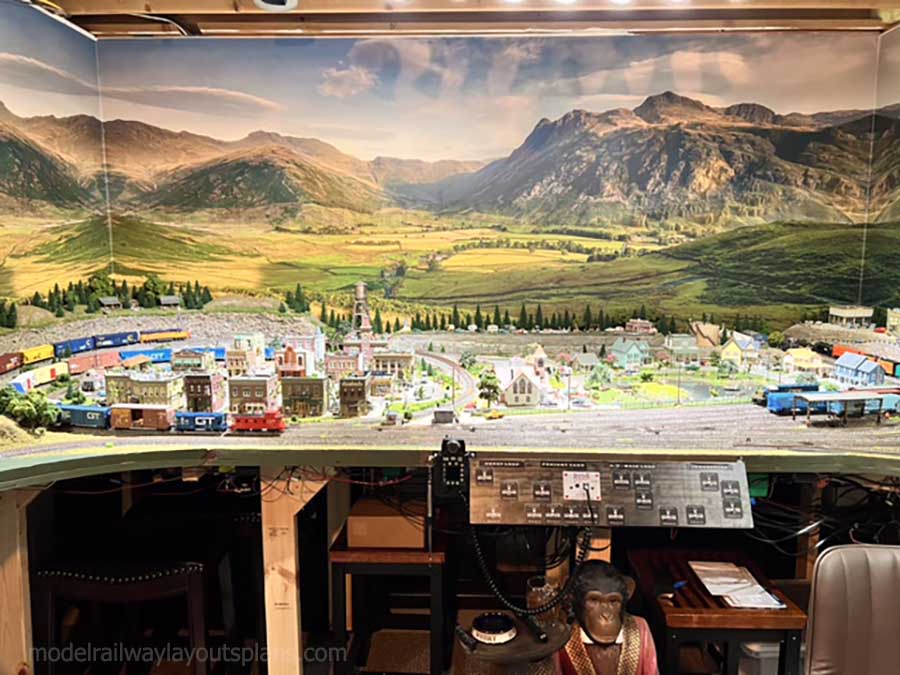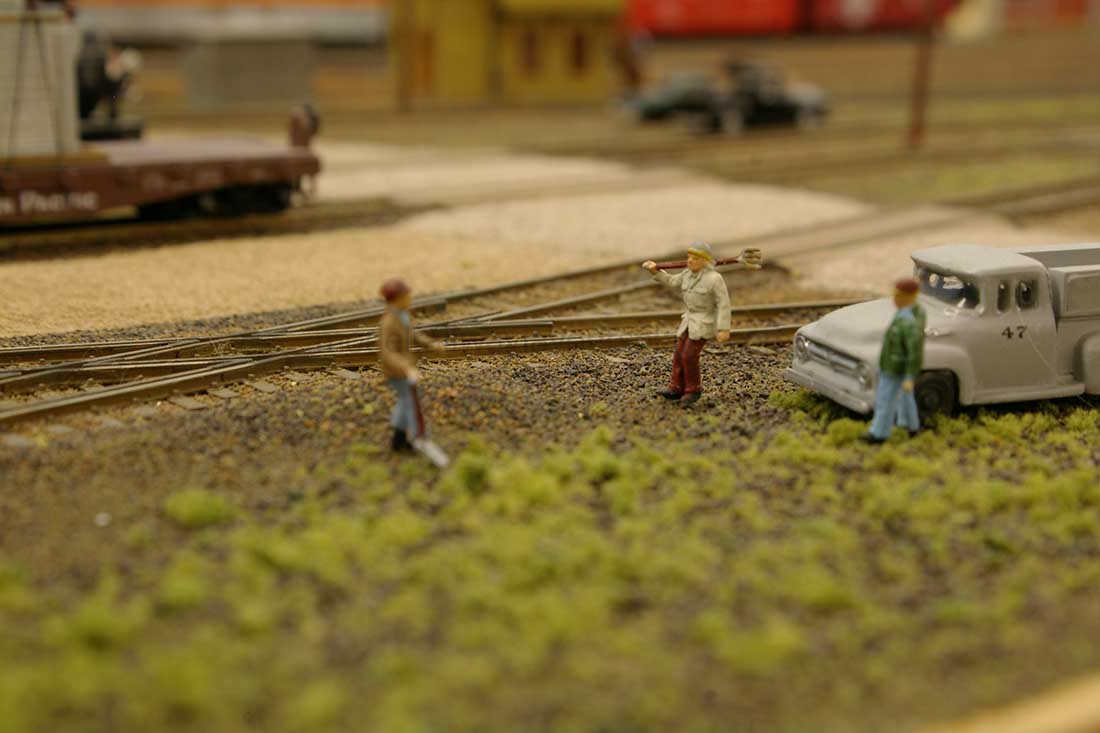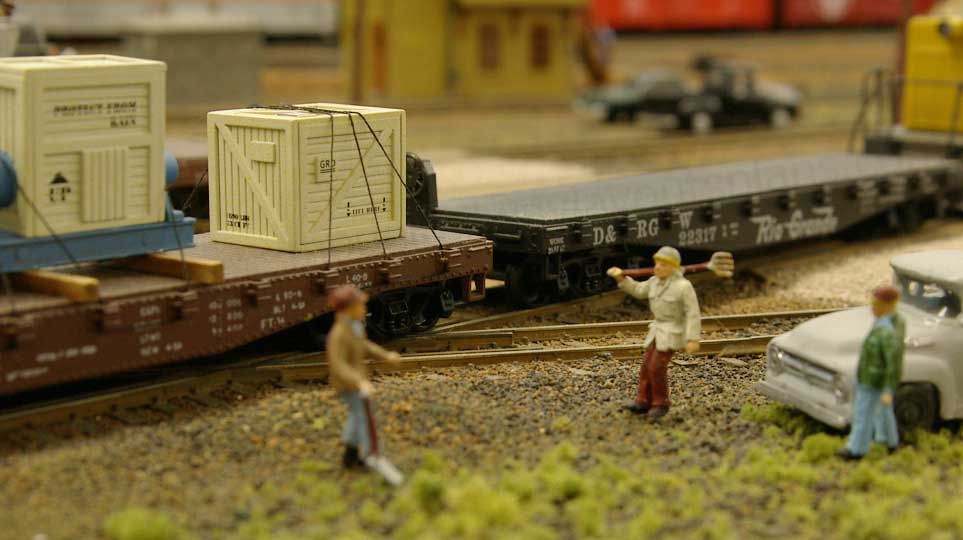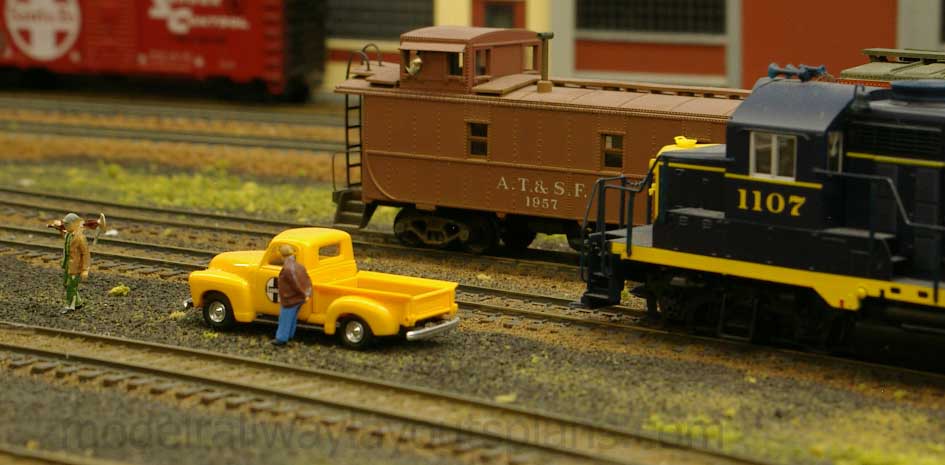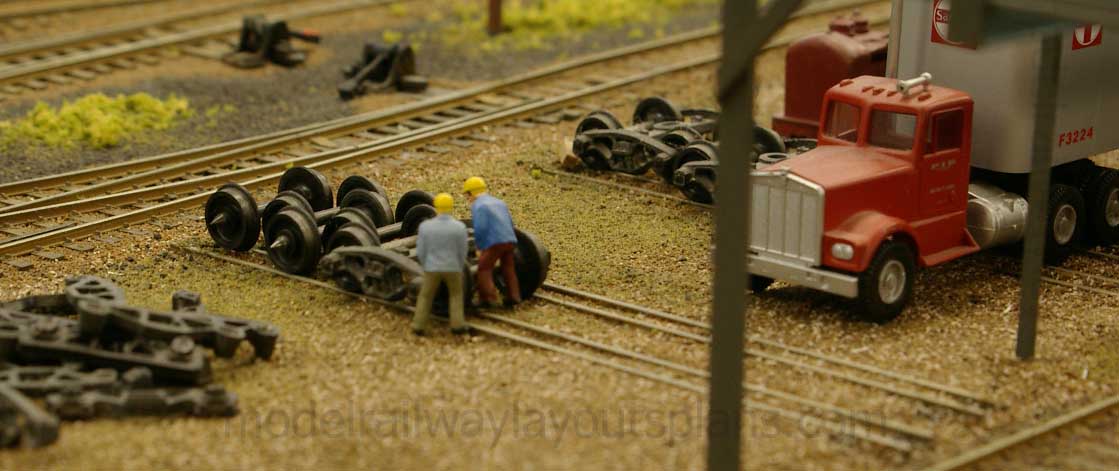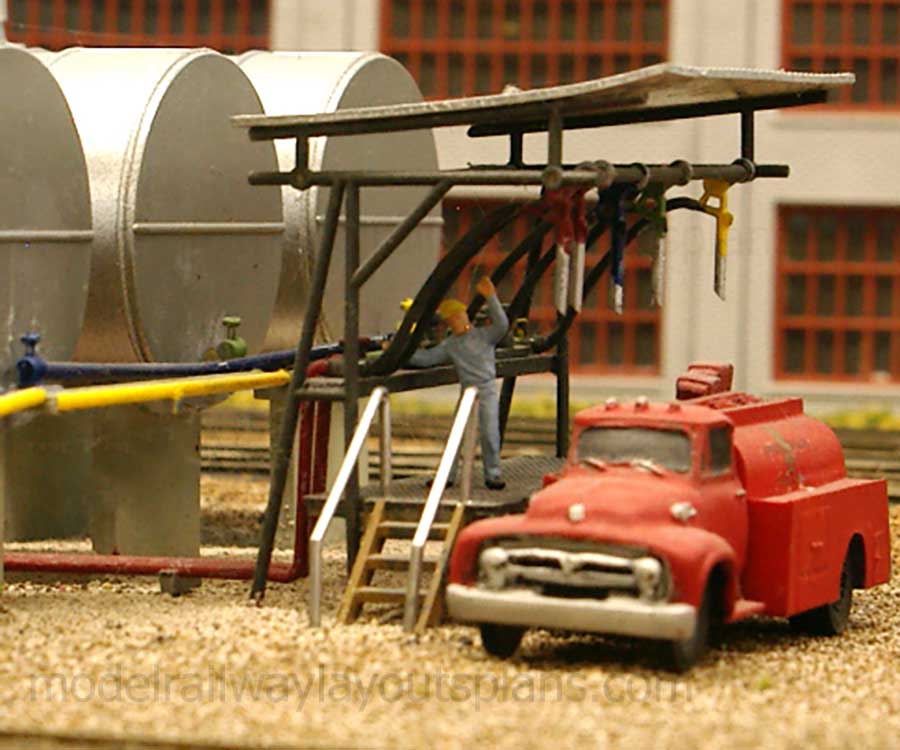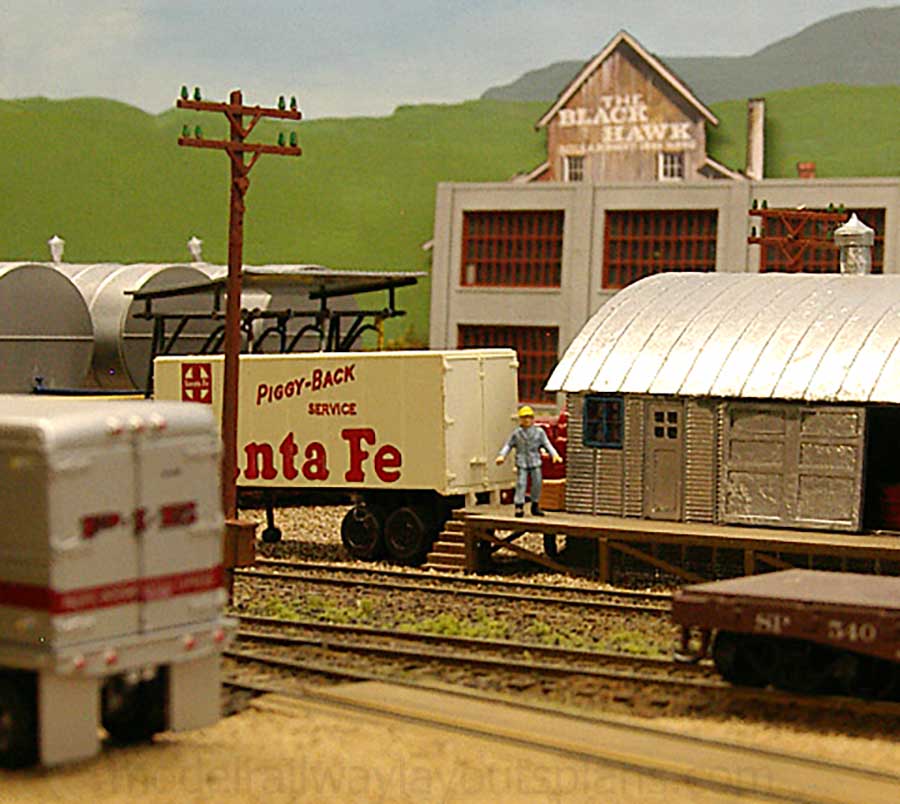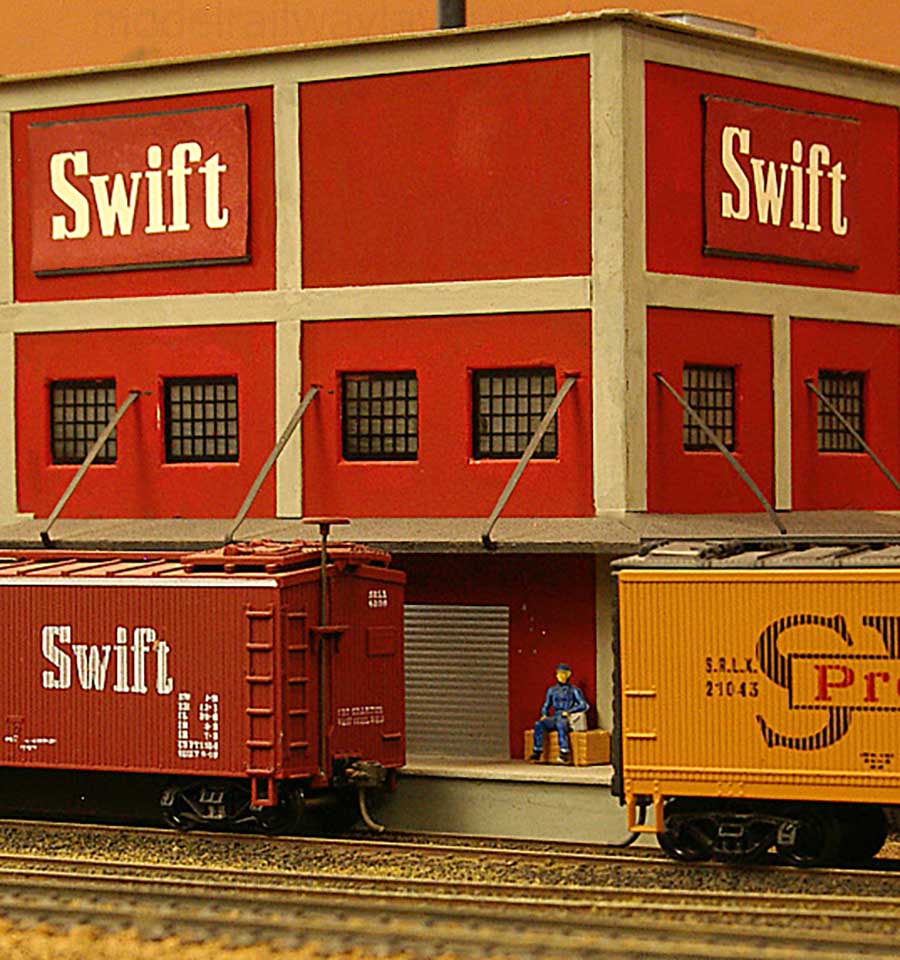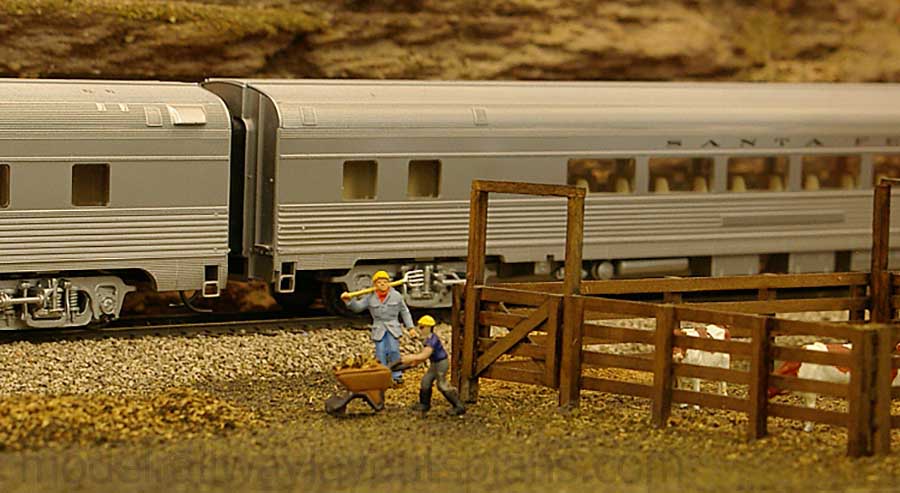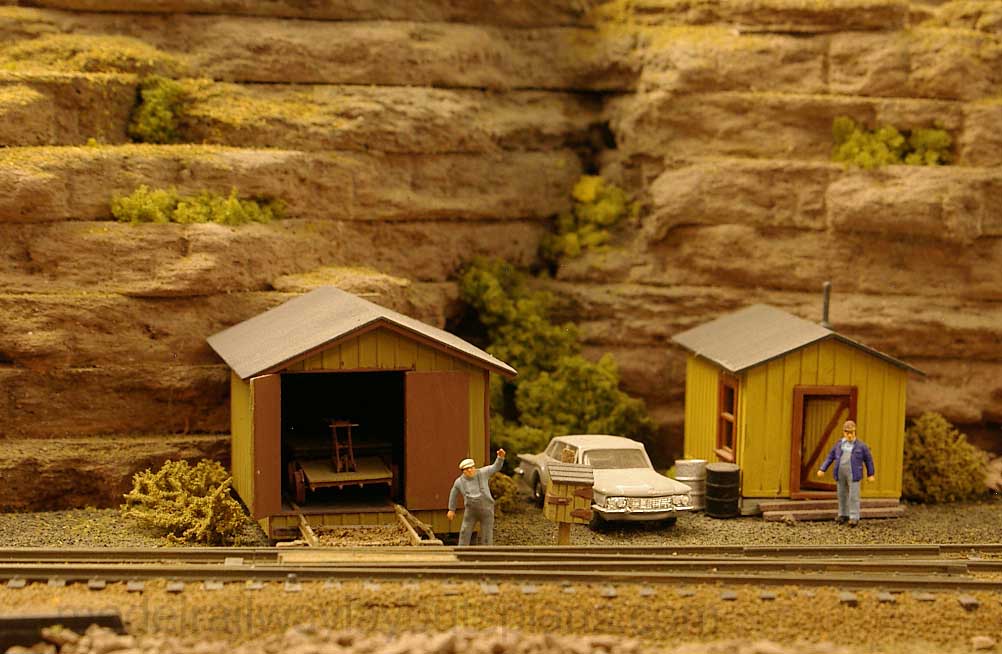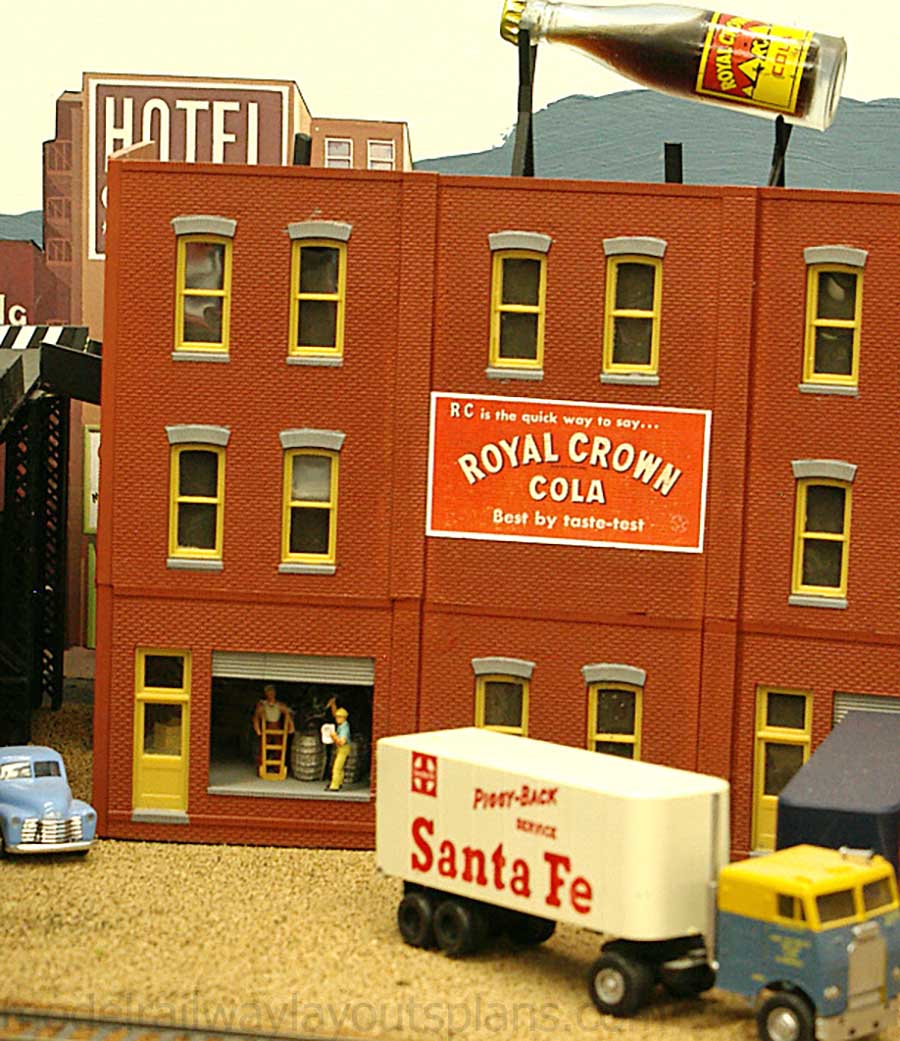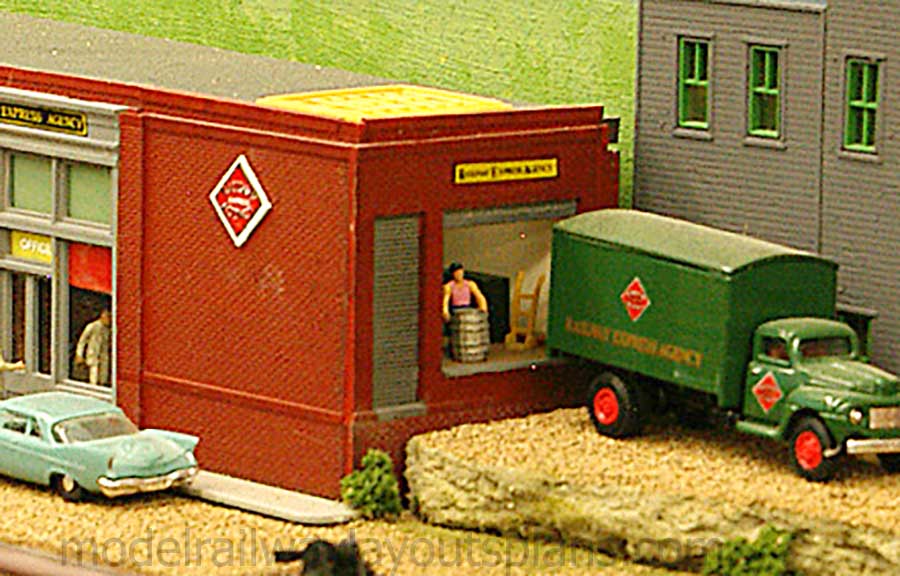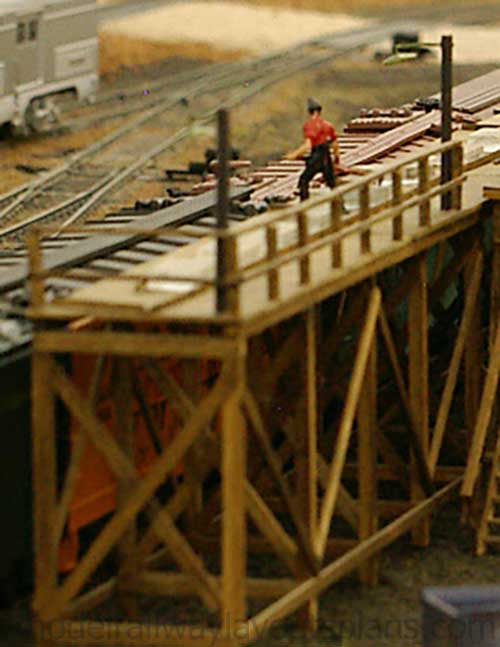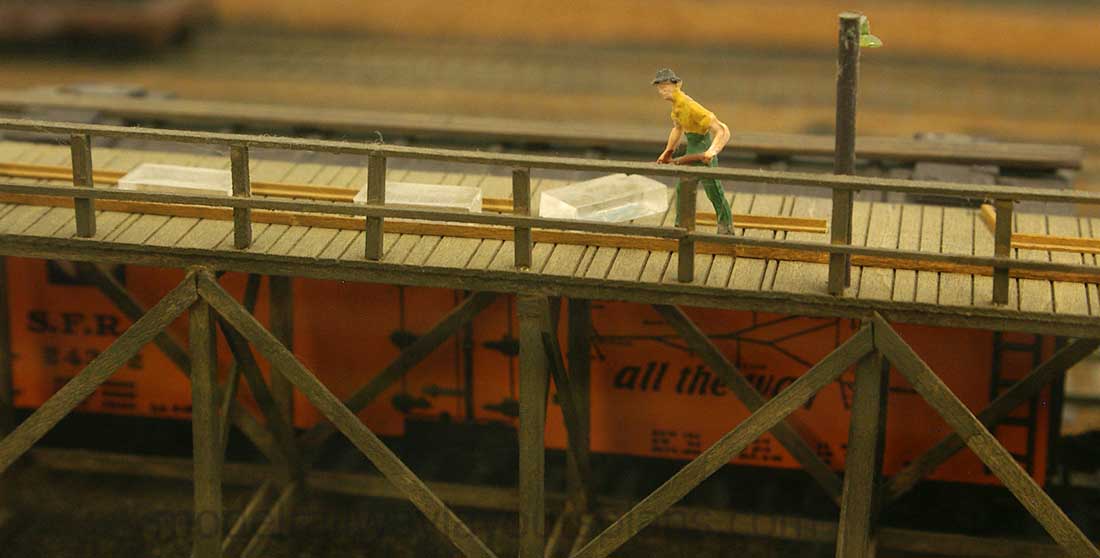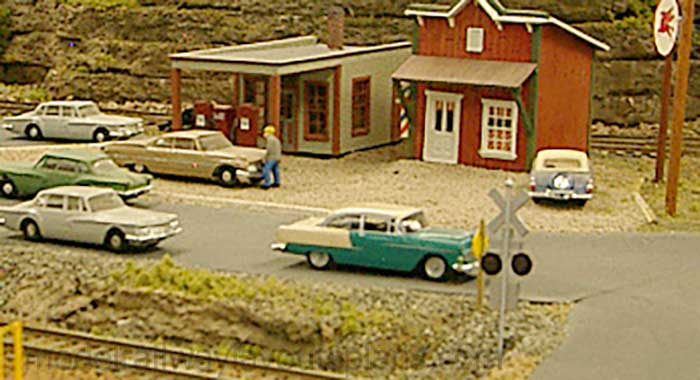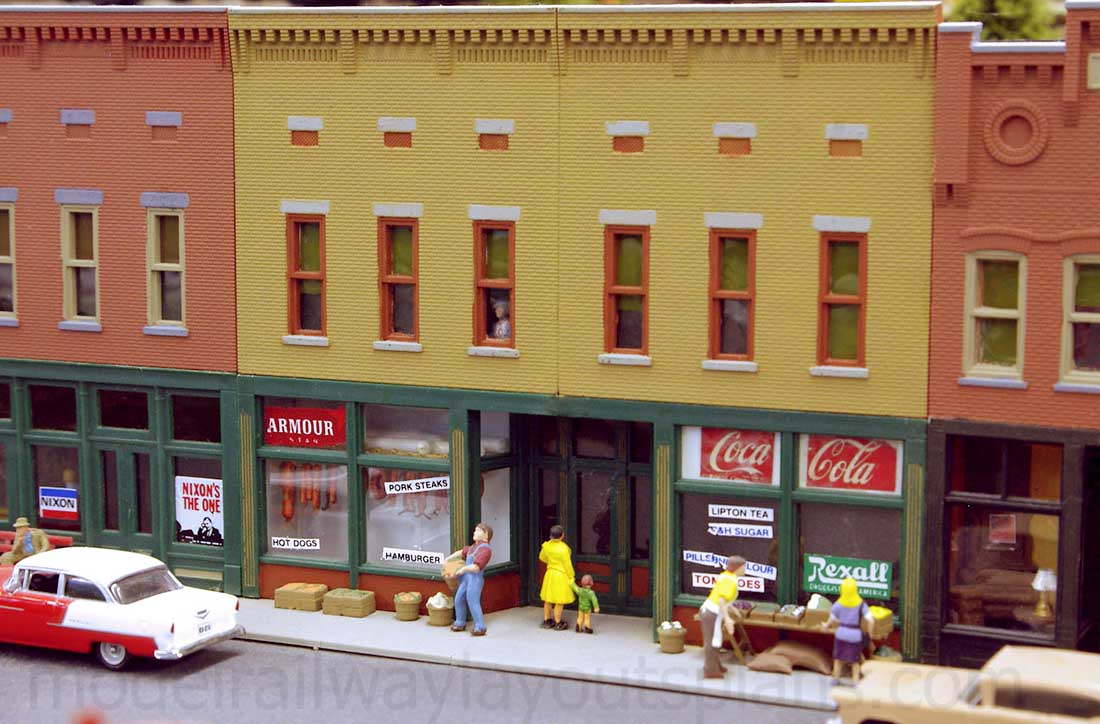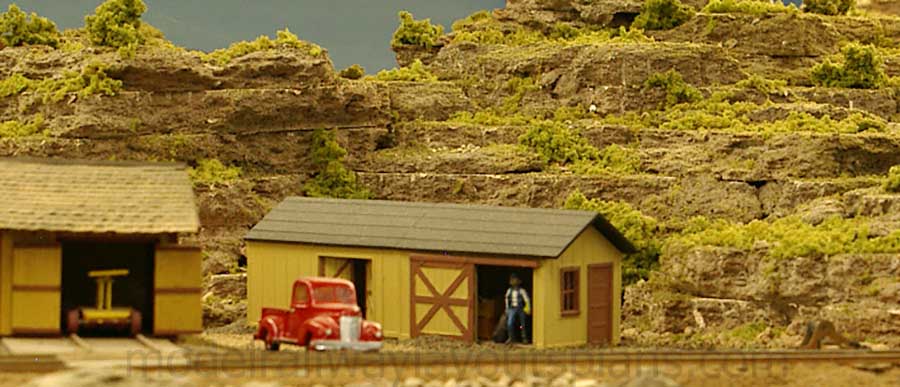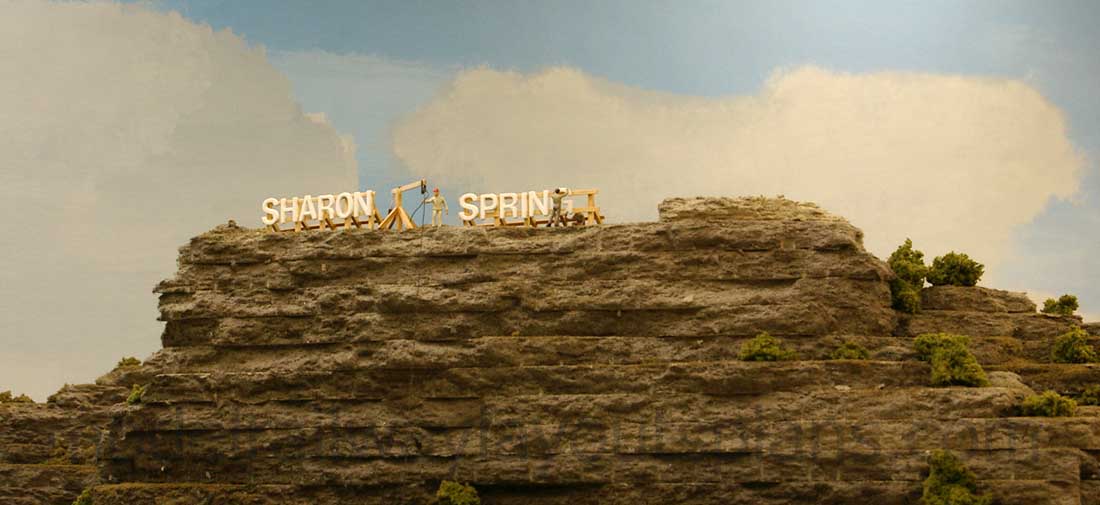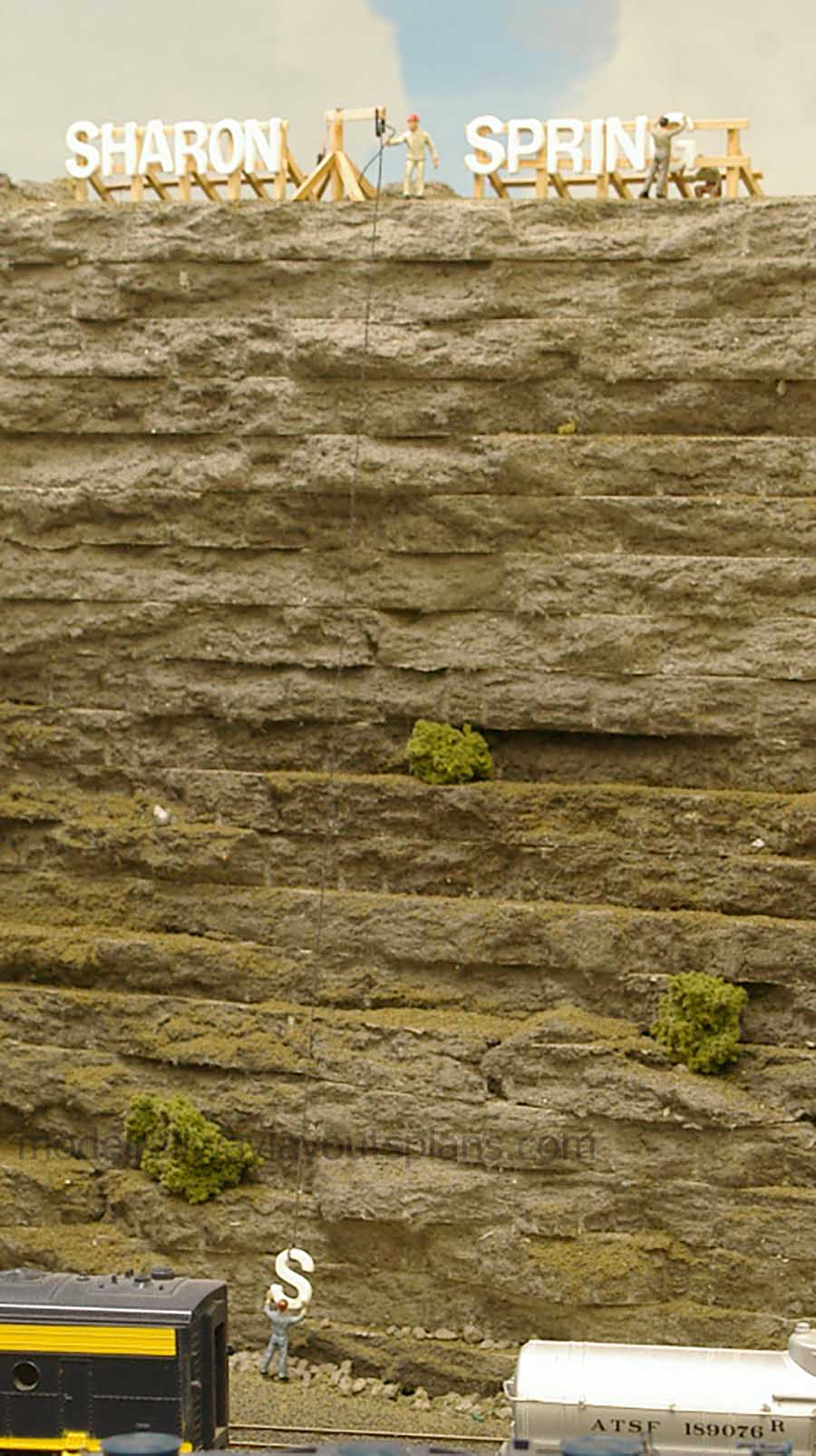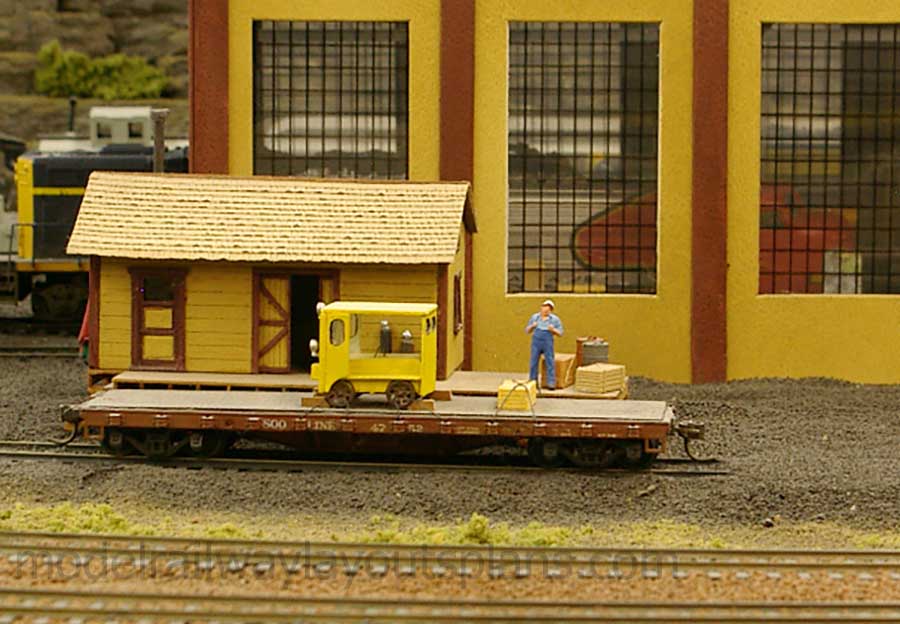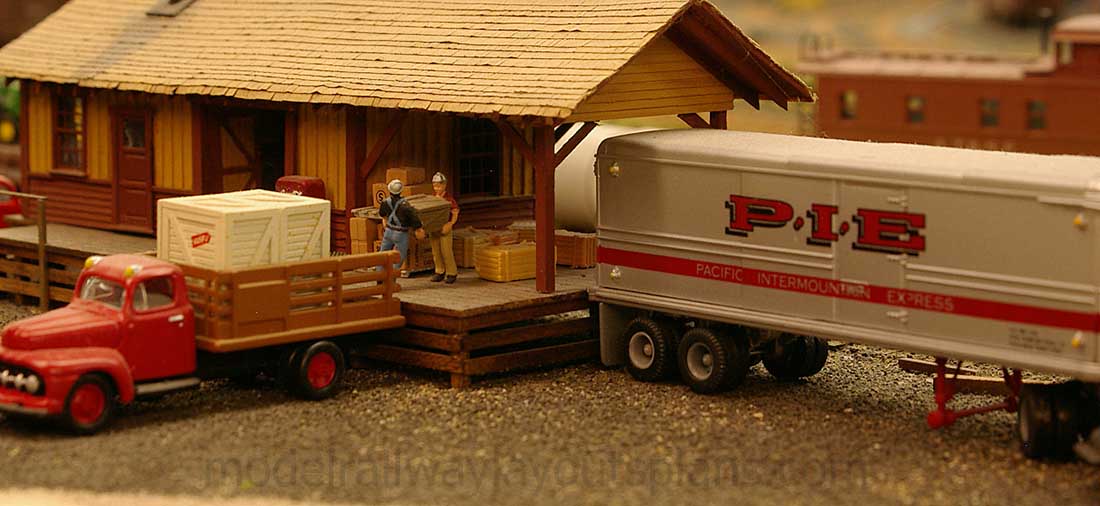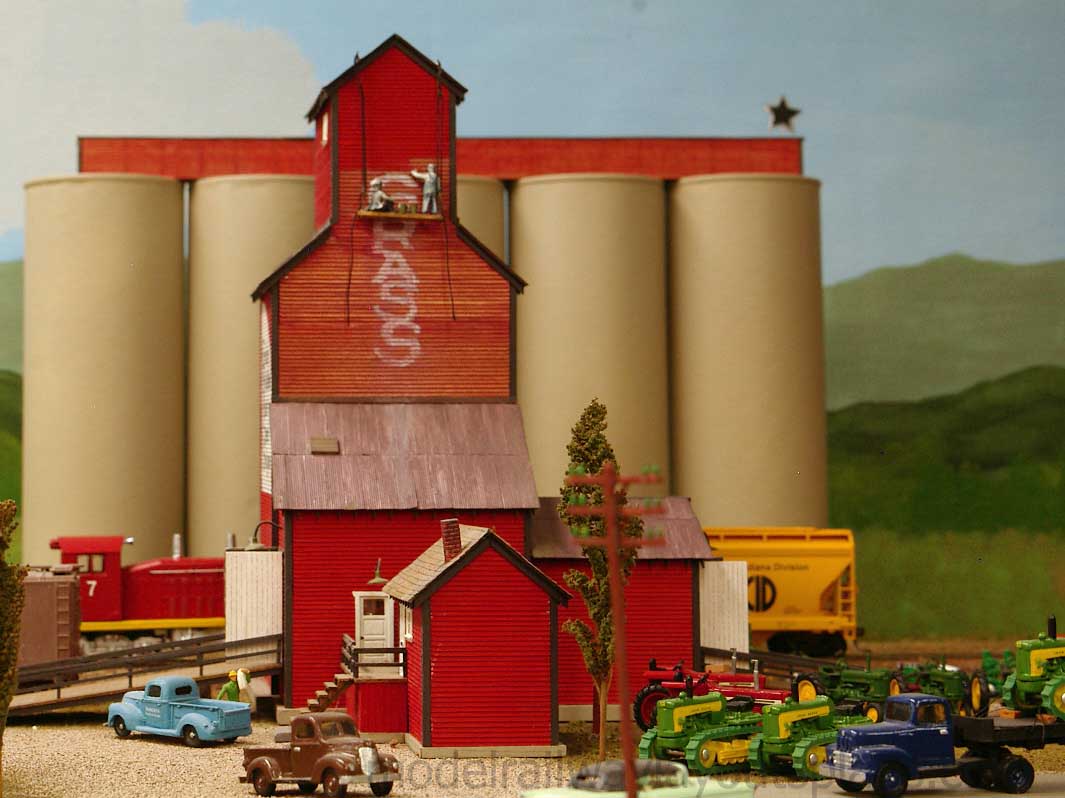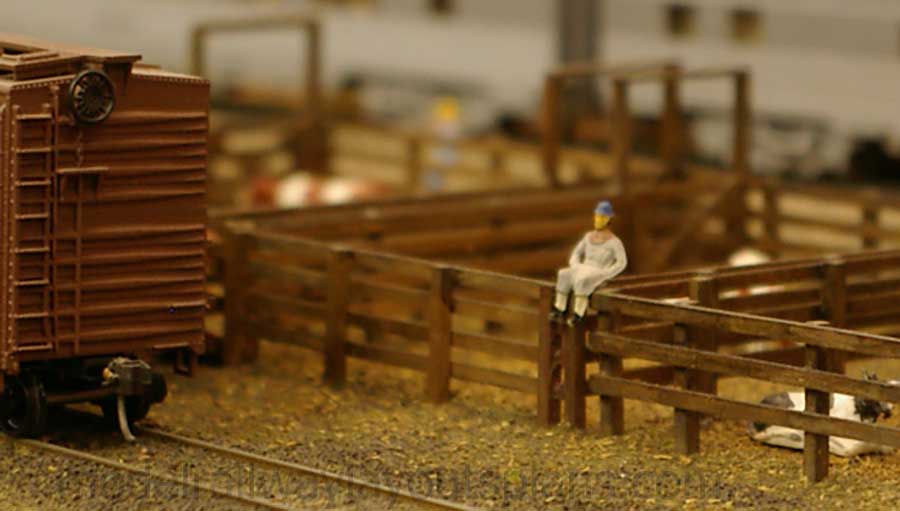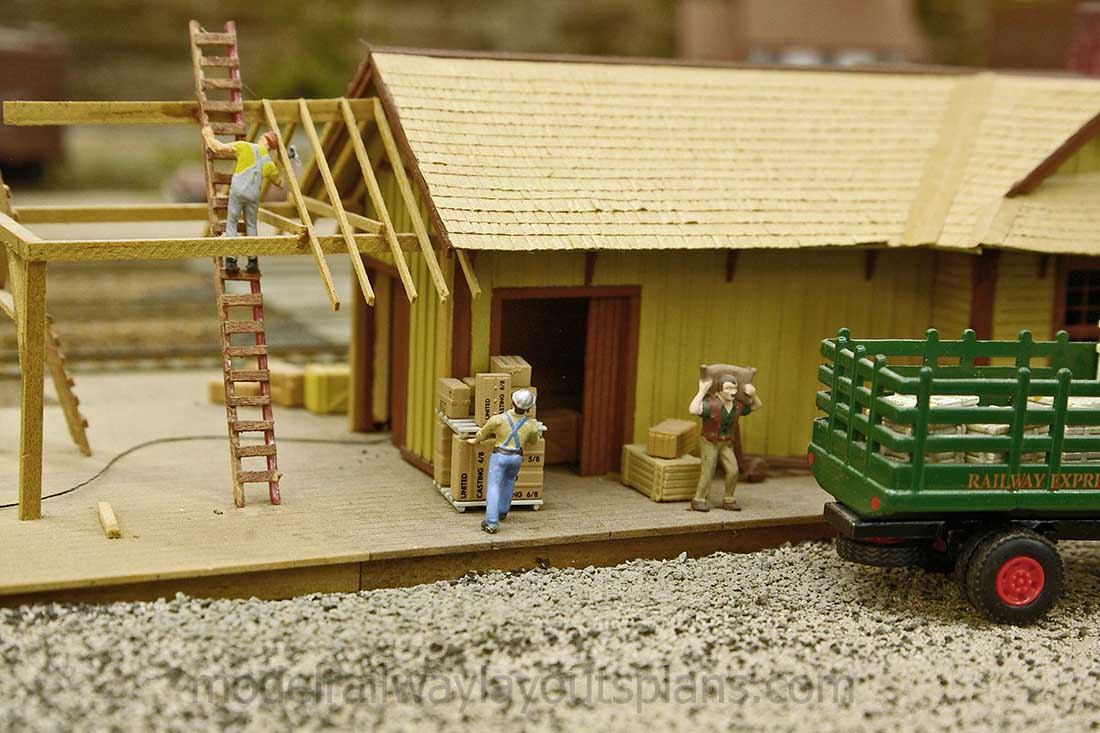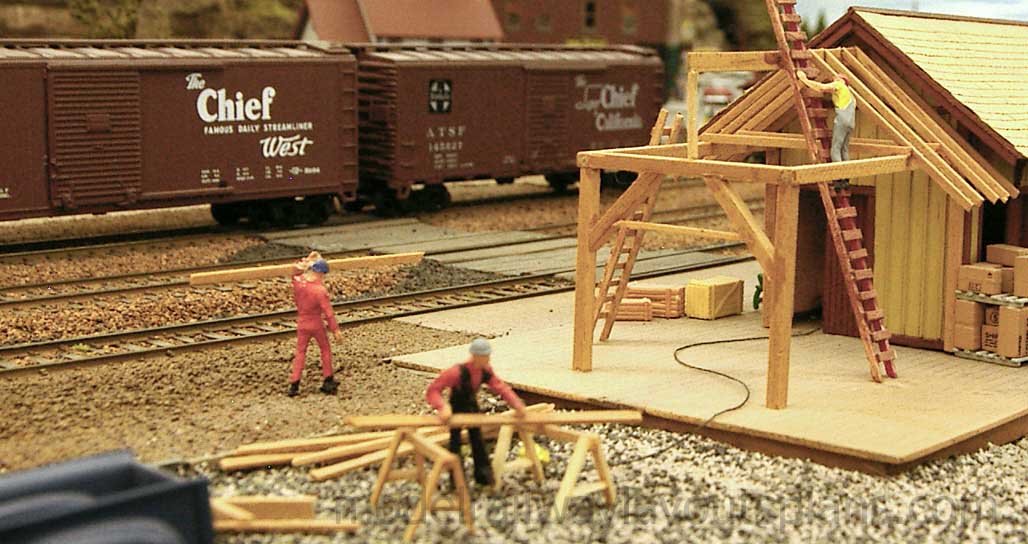John’s added to the HO switching layouts on the blog with this fab update:
“Hi Al,
I’ve been busy with more stuff since I “retired” than I had when I was working! But the railroad has continued to grow in spite of everything else.
This time I added a few feet to the isle area of the layout, and put in tracks for more industry.
This part of the layout is pinned to switching and moving cars to the various industries. It will be wired and controlled separately from the rest of the layout.
I have always found “HO switching layouts” to be fun and challenging. How to get that tank car to the oil distributer without trapping the engine in the siding, collecting 2 “empty” boxcars and replacing them with “full” ones on a siding only long enough for 2 cars at a time, stuff like that.
I also added the “Almost Heaven RV Resort modeled after on of the worst places the wife and I ever took our RV! Actually this the one on the layout is better.
On a whim I bid on a bunch of Army vehicles, and won, so I put in the West Virginia Coal County National Guard yard post.
The small “Quonset” buildings are cookie holders from Girl-Scout cookies, the bigger ones are stripped cardboard.
As always, thanks so much for all you do for the hobby – world-wide!
I’ll send more pictures in a few days, trying out some interesting camera settings.
Regards,
John from Baltimore”
A big thanks to John for adding to the HO switching layouts on the blog.
I’ve been a fan of his layouts for a long time now.
It also reminded me of this one:
That’s all for today folks.
Please do keep ’em coming.
And if you think everyone else is having all the fun, the Beginner’s Guide is here.
Best
Al
PS More HO scale train layouts here if that’s your thing.
Need buildings for your layout? Have a look at the Silly Discount bundle.
